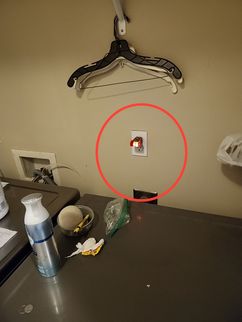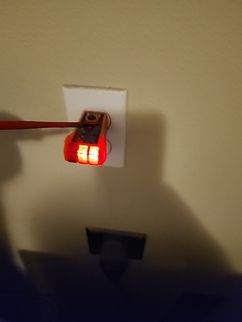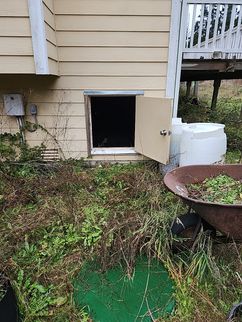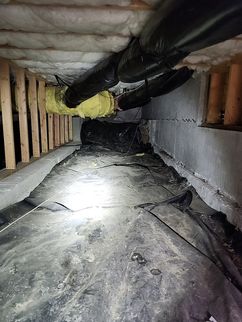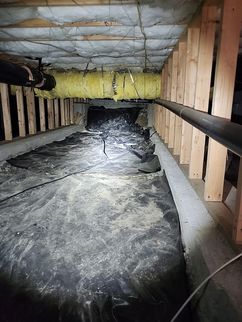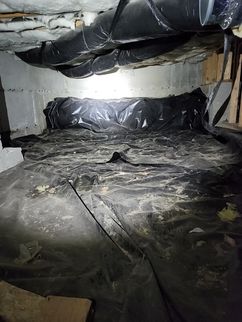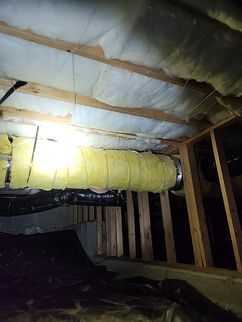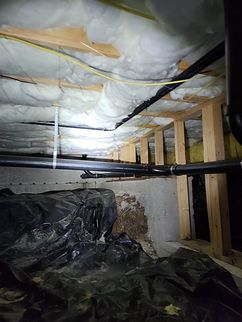The Scope and Purpose of a Home Inspection
Purchasing property involves risk
The purpose of a home inspection is to help reduce the risk associated with the purchase of a structure by providing a professional opinion about the overall condition of the structure. A home inspection is a limited visual inspection and it cannot eliminate this risk. Some homes present more risks than others. We cannot control this, but we try to help educate you about what we don’t know during the inspection process. This is more difficult to convey in a report and one of many reasons why we recommend that you attend the inspection.
A home inspection is not an insurance policy
This report does not substitute for or serve as a warranty or guarantee of any kind. Home warranties can be purchased separately from insuring firms that provide this service.
A home inspection is visual and not destructive
The descriptions and observations in this report are based on a visual inspection of the structure. We inspect the aspects of the structure that can be viewed without dismantling, damaging, or disfiguring the structure and without moving furniture and interior furnishings. Areas that are concealed, hidden or inaccessible to view are not covered by this inspection. Some systems cannot be tested during this inspection as testing risks damaging the building. For example, overflow drains on bathtubs are generally not tested because if they were found to be leaking, they could damage the finishes below. Our procedures involve non-invasive investigation and non-destructive testing which will limit the scope of the inspection.
This is not an inspection for code compliance
This inspection and report are not intended for city / local code compliance. During the construction process structures are inspected for code compliance by municipal inspectors. Framing is open at this time and conditions can be fully viewed. Framing is not open during inspections of finished homes, and this limits the inspection. All houses fall out of code compliance shortly after they are built, as the codes continually change. National codes are augmented at least every three years for all of the varying disciplines. Municipalities can choose to adopt and phase in sections of the codes on their own timetables. There are generally no requirements to bring older homes into compliance unless substantial renovation is being done.
This is just our opinion
Construction techniques and standards vary. There is no one way to build a house or install a system in a house. The observations in this report are the opinions of the home inspector. Other inspectors and contractors are likely to have some differing opinions. You are welcome to seek opinions from other professionals.
The scope of this inspection
This inspection will include the following systems: exterior, roof, structure, drainage, foundation, attic, interior, plumbing, electrical, and heating. The evaluation will be based on limited observations that are primarily visual and non-invasive. This inspection and report are not intended to be technically exhaustive.
Your expectations
The overall goal of a home inspection is to help ensure that your expectations are appropriate for the house you are proposing to buy. To this end, we assist with discovery by showing and documenting observations during the home inspection. This should not be mistaken for a technically exhaustive inspection designed to uncover every defect in a building. Such inspections are available, but they are generally cost-prohibitive to most homebuyers.
Your participation is requested
Your presence is requested during this inspection. A written report will not substitute for all the possible information that can be conveyed verbally by a shared visual observation of the conditions of the property.
How to Read This Report
Getting the Information to You
This report is designed to deliver important and technical information in a way that is easy for anyone to access and understand. If you are in a hurry, you can take a quick look at our "Summary Page” and quickly get critical information for important decision-making. However, we strongly recommend that you take the time to read the full Report, which includes digital photographs, captions, diagrams, descriptions, videos, and hot links to additional information.
The best way to get the layers of information that are presented in this report is to read your report online, which will allow you to expand your learning about your house. You will notice some words or series of words highlighted in blue and underlined – clicking on these will provide you with a link to additional information.
This report can also be printed on paper or to a PDF document.
Chapters and Sections
This report is divided into chapters that parcel the home into logical inspection components. Each chapter is broken into sections that relate to a specific system or component of the home. You can navigate between chapters with the click of a button on the left-side margin.
Most sections will contain some descriptive information in black font. Observation narrative, done in colored boxes, will be included if a system or component is found to be significantly deficient in some way or if we wish to provide helpful additional information about the system or the scope of our inspection. If a system or component of the home was deemed to be in satisfactory or serviceable condition, there may be no narrative observation comments in that section, and it may simply say “tested” or “inspected.”
Observation Labels
All narrative observations are colored, numbered, and labeled to help you find, refer to, and understand the severity of the observation. Observation colors and labels used in this report are:
Summary Page
The Summary Page is designed as a bulleted overview of all the observations noted during your inspection. This helpful overview is not a substitute for reading the entire inspection report. The entire report must be read to get a complete understanding of this inspection report, as the Summary Page does not include photographs, photo captions, and other important information.
The following items or discoveries indicate that these systems or components do not function as intended, are safety concerns or adversely affect the habitability of the dwelling, warrant further investigation by a specialist, or require subsequent observation. This summary shall not contain recommendations for routine upkeep of a system or component to keep it in proper functioning condition or recommendations to upgrade or enhance the function or efficiency of the building.
This Summary is not the entire report. The complete report may include additional information of concern to the customer.
It is strongly recommended that the customer and/or Realtor(s) read the complete report as there could be additional items in the report that you may want on your inspection addendum.
All repairs and or replacements of items and components made to the property should be done by licensed, qualified contractors or tradesmen in that respective area. Clients are strongly encouraged to obtain estimates before making any decisions about the property.
SUMMARY/AREAS
REQUIRING FURTHER EVALUATION
IMPORTANT NOTE- PLEASE READ: The Summary pages are provided to allow the reader a brief overview of the report. These pages are not all encompassing. Reading these pages alone is not a substitute for reading the report in its entirety. The entire Inspection Report, including the Standards of Practice, limitations, Scope of Inspection and Pre-Inspection Agreement must be carefully read to fully assess the findings of the inspection.
This list is not intended to determine which items may need to be addressed per the contractual requirements of the sale of the property. Any areas of uncertainty regarding to the contract should be clarified by consulting an attorney or real estate agent. It is recommended that any deficiencies, and the components and/or systems related to these deficiencies, be evaluated and/or inspected and repaired as needed by licensed contractors/professionals PRIOR TO THE CLOSE OF ESCROW.
Further evaluation PRIOR to the close of escrow is recommended so a properly licensed professional can evaluate our concerns further and inspect the remainder of the system or component for additional concerns that may be outside our area of expertise or the scope of our inspection. Please call our office for any clarifications or further questions.
253-841-1128
Moisture Meter Testing
Where moisture meter testing is indicated in this report a Protimiter Survey Master was used. This meter does not assess surface moisture. The protimiter survey master assesses sub-surface moisture to a depth of approximately 3/4 of an inch.
INSPECTION STANDARDS
The performance of your inspection is governed by standards set by the Washington State Department of Licensing and is codified in the Washington Administrative Code (WAC) in chapter 308-408C sub sections 010 through 180. The following link will take you to this chapter: WAC 308-408C-010-180
Home inspectors are not required to report on the following: Life expectancy of any component or system; The causes of the need for a repair; The methods, materials, and costs of corrections; The suitability of the property for any specialized use; Compliance or non-compliance with codes, ordinances, statutes, regulatory requirements or restrictions; The market value of the property or its marketability; The advisability or inadvisability of purchase of the property; Any component or system that was not observed; The presence or absence of pests such as wood damaging organisms, rodents, or insects; or Cosmetic items, underground items, or items not permanently installed. Home inspectors are not required to: Offer warranties or guarantees of any kind; Calculate the strength, adequacy, or efficiency of any system or component; Enter any area or perform any procedure that may damage the property or its components or be dangerous to the home inspector or other persons; Operate any system or component that is shut down or otherwise inoperable; Operate any system or component that does not respond to normal operating controls; Disturb insulation, move personal items, panels, furniture, equipment, plant life, soil, snow, ice, or debris that obstructs access or visibility; Determine the presence or absence of any suspected adverse environmental condition or hazardous substance, including but not limited to mold, toxins, carcinogens, noise, contaminants in the building or in soil, water, and air; Determine the effectiveness of any system installed to control or remove suspected hazardous substances; Predict future condition, including but not limited to failure of components; Since this report is provided for the specific benefit of the customer(s), secondary readers of this information should hire a licensed inspector to perform an inspection to meet their specific needs and to obtain current information concerning this property.
The Full Report
Grounds
Grounds Overview Photos
General Grounds Header
Limitations
Grading and Drainage
Hard Surfaces
Decks and Balconies
Exterior
Exterior Overview Photos
General Exterior Inspection Standards
Siding and Trim
Eave/Overhang System
Exterior Doors and Windows
Vegetation/Scrap Wood/Trees
Exterior Testing Procedures
Roof
Roof Overview Photos
General Roof Inspection Standards
Roof Materials & Identified Concerns
Flashing
Gutters and Downspouts
Roof Inspection Procedures
Attic
Attic Overview Photos
General Attic Inspection Standards
Attic Insulation
Attic and Roof Cavity Ventilation
Attic Inspection Procedures
Electrical
Electrical Overview Photos
General Electrical Inspection Standards
Electric Service Permits Found
Electric Service and Service Grounding
Service Equipment - Main Electrical Panel
Branch Wiring
Electrical Testing Procedures
Plumbing
Plumbing Overview Photos
General Plumbing Inspection Standards
Plumbing Limitations
Water Meter & Exterior Plumbing
Water Pressure Tested During Inspection
Water Heater/Boiler
Water Temperature
Main Fuel Shut Off
Location of Main Water Shut Off
Plumbing Testing Procedures
Heating & Cooling
Heating and Cooling Overview Photos
Heating and Cooling Limitations
Heating and Cooling Inspection Standards
Heating System
Furnace Forced Air
Gas Fireplace
Heating and Cooling Distribution Systems
Kitchen
Kitchen Overview Photos
Kitchen Inspection Procedures
Kitchen Inspection Limitations
Sinks and Faucets
Floors
Counters & Cabinets
Ventilation Method
Appliances
Interior
Interior Overview Photos
Interior Inspection Procedures
Interior Limitations
Floors
Walls, Ceiling & Trim
Doors and Windows
Stairs, Handrails and Guardrails
Electrical Components
Smoke and Carbon Monoxide Alarm Systems
Bathroom 1 - Lower Level 1/2 Bath
Bathroom Overview Photos
General Bathroom Information
Floors
Caulking
Toilets, Bidets & Urinals
Bathroom 2 - Upper Level Common Hall Full Bath
Bathroom Overview Photos
Floors
Caulking
Sinks, Drains and Faucets
Toilets, Bidets & Urinals
Electrical Components
General Comments
Building Characteristics, Conditions and Limitations
Type of Building : Single Family (2-story)
Approximate Square Footage: 2516
Approximate Year of Original Construction: 2003
Attending the Inspection: Seller
Seller
Occupancy: Occupied/Staged with Furnishings
Occupied/Staged with Furnishings
Rain in the Past 3 Days: Yes
Yes
Weather during the inspection: Light Rain
Light Rain
Approximate temperature during the inspection: Below 50[F]
Ground/Soil surface conditions: Wet
OCCUPIED HOUSE LIMITATIONS
Your inspection today occurred when the structure was occupied (not vacant and empty) or was staged with furnishings as part of this real estate transaction. This inspection is limited to those areas that are 'visibly accessible.' Furnishings of any type (including floor coverings), storage of personal items, and accumulations of miscellaneous 'stuff' conceal areas from view. I cannot move items to inspect the areas where those items are situated. Anything is capable of concealing a noteworthy deficiency. I strongly recommend, if at all possible, that you walk through the property after ALL items have been removed (structure is empty) and before this transaction closing, looking for any defect that was not visible due to the items present at the time of this inspection. The Sterling Team will happily schedule a re-inspection after removing all items if you are uncomfortable doing this yourself. (A re-inspection fee may apply.)
Today's Pre-Listing Inspection
A pre-listing inspection focuses on the proper functionality of all major systems and components of the house: heating and cooling, electrical, plumbing, roof and structure, siding, and doors and windows. It’s a full inspection for the seller to better understand the condition of their home prior to the buyer’s inspection. This gives the seller important information to consider so they’re not caught off-guard in the midst of a transaction.
The value to the seller is that a pre-listing inspection makes them aware of issues in advance of negotiating a purchase agreement, allowing them the chance to resolve the issues or have them accounted for upfront in the asking price. This gives the seller better control in marketing their home and helps minimize stress from heat-of-the-moment negotiations once a purchase agreement is tendered. Homes that have a pre-listing inspection generally sell faster and have fewer inspection-related issues to negotiate, enabling a smoother transaction.
Grounds
General Grounds Header
Today, I inspected the site upon which the building is located. In a general sense, I looked for concerns arising from the grade of the land and the potential for drainage that might adversely affect the building. Additionally, I looked for the presence of vegetation that is now or could, in the future, adversely affect the structure. Driveways, walkways, steps patios, and retaining walls that are contiguous with the structure, if present, were also inspected. The presence of current deficiencies with those components will be detailed in this section of your report.
Limitations
WATER FEATURE NOT INSPECTED
The water feature and related equipment were not inspected. The inspection of water features falls outside of the scope of a standard home inspection. If you wish to learn more about the equipment I recommend employing a plumbing contractor or landscape specialist.
Grading and Drainage
UNDERGROUND DRAINS NOT INSPECTED
The inspection of underground drains, including yard drains, hard surface drains, the underground portion of roof drains and any other type of underground drainage system falls outside of the scope of established home inspection standards. (The Washington State Department of Licensing establishes these standards.) A drainage system appears to have been installed here. I did not test its performance or capacity to accommodate anticipated loads. The current homeowner may obtain some information about the drain's past performance. If a complete evaluation of the drain system is needed, I recommend employing a qualified licensed drainage contractor.
RAIN BARREL - NO OVERFLOW
The rain barrels collecting roof runoff have no provision for overflow water. One good day of rain can quickly fill one of these barrels. To prevent water from draining adjacent to the foundation, automatic overflows that discharge overflow water at least 5 feet away from the foundation are needed.
Hard Surfaces
Hard Surface Cracks: Driveway Cracks - Minor
Driveway Cracks - Minor
Decks and Balconies
Deck and Balcony Common Observations: Wood Deck Rot Present (Deck Board and/or Structure)
Wood Deck Rot Present (Deck Board and/or Structure) Deck Finish Peeling/Worn
Deck Finish Peeling/Worn No Deck Flashing Visible
No Deck Flashing Visible
Deck/Balcony Structural Concerns: Wood Support Post in Contact with Soil, Support Post not Plumb
POST-WOOD SOIL CONTACT
One or more of the support posts beneath the deck are in direct contact with the soil. This subjects the posts to the potential of wood rot. Over time, even most pressure-treated lumber will rot if left buried in soil. The posts should rest on concrete piers safely above the soil level. I recommend further evaluation and correct as necessary. A qualified licensed contractor should complete this.
DECK SUPPORT POST NOT INSTALLED CORRECTLY
One or more of the deck support post are not installed and secured properly to the support post bracket and could fail causing the deck to collapse. I recommend further evaluation and correct as necessary. This should be completed by a qualified licensed contractor.
DECK FINISH PEELING/WORN
There is one or more locations where the finish (paint/stain) on the deck is peeling/worn and/or faded. A properly maintained coating of a quality finish material is the first line of defense for the wood decking material. Whether paint, stain, or other sealant, the finish should be maintained and kept free of debris. Unprotected wood that is exposed to the weather is more likely to rot/fail sooner than protected wood. I recommend further evaluation of the entire deck structure and correct as required. A qualified licensed contractor should complete this work.
WOOD DECK MAINTENANCE
Wood decks, whether treated or not, must be kept free of debris. Debris and materials, such as rugs or carpeting, hold moisture against the surface of the wood. If the wood cannot dry, it will eventually rot. Any organic growth on any deck surface should be cleaned away as soon as possible. Annual cleaning of the deck will prolong its life. Cleaning can be accomplished by scrubbing the deck with a sodium-hypochlorite (bleach) and Tri-Sodium-Phosphate (TSP) deck wash and then rinsing with a pressure washer. Any finish coating (paint, stain, sealant, etc.) should be maintained in good condition.
DECK WOOD ROT - SURFACE AND/OR STRUCTURE
The deck has wood rot in one or more of the deck rot surface/structure. If rot is present in one location, the likelihood of rot being present in other areas increases (some of those not readily visible). All deck components containing wood rot should be replaced. Wood rot compromises the structural integrity of the deck making it more prone to failure. I recommend further evaluation of the entire deck and correct as necessary. A qualified licensed contractor should complete this. PHOTOS ARE NOT ALL INCLUSIVE: The photos shown are representative of the wood rot that is present. It is not intended that these photos include every instance of wood rot. A professional decking contractor should evaluate the entire deck, including the supporting structure.
NO DECK FLASHING
The deck does not have visible flashing at the top of the intersecting point where the deck ledger board connects to the building. The lack of flashing provides a point of ingress for moisture to reach the wooden structural components of both the deck and the building. Wood rot will occur if wood structural components are allowed to remain wet. Due to the nature of the ledger/building interface, wood rot damage can be difficult or impossible to detect from a visual inspection. Hidden damage may be present. Proper flashing should be installed to reduce the chance of moisture intrusion. If it is not practical to install flashing, appropriate caulking may serve to reduce moisture intrusion. Monitor this area for visible moisture or discoloration.
Exterior
General Exterior Inspection Standards
EXTERIOR INSPECTION INFORMATION
This report section details your inspector’s findings about the structure's exterior. The exterior siding system, also called the weather-resistant barrier, includes siding, trim, flashings, windows, doors, etc. The building exterior is examined visually from the ground. Areas of suspected decay/rot are probed to confirm or refute the suspicion. The purpose of the exterior envelope (siding system) is to keep water away from building components that have no water-resistive properties. Siding system failures can lead to damage that is often hidden from view. When one area of decay is identified, the likelihood of decay in other areas. Therefore, a qualified professional needs further evaluation of the entire structure. Moisture damage is often very costly to repair. The property owner can complete some siding system repairs. However, I recommend employing a professional, licensed siding contractor to evaluate further and repair more severe deficiencies such as rot and decay. All repair work should be completed before the close of escrow.
Siding and Trim
Siding Material: Fibered cement board (lap), Adhered Manufactured Stone Veneer (AMSV)
Trim Material: Wood
General Siding Concerns: Deficient Siding or Trim Paint/Stain, Any Caulking Deficiency
WOOD TRIM ROT
There is one or more location(s) where I found wood rot present in the trim. When one area of wood rot is present, the likelihood of rot in other areas increases (including wood siding). Additionally, rot visible at the trim may extend to structural components, not visible behind the trim. There are many reasons trim rots. They all start with moisture (water) in contact with the wood. The source of the moisture must be identified and stopped. The damaged, rotted trim should be properly repaired/replaced. This would include caulking and painting/staining to protect against future moisture intrusion. I recommend further evaluation of the entire building and correct as necessary. A qualified licensed contractor should complete this work. FYI: The photos are representative of this deficiency, not a depiction of each instance of the deficiency present at the time of the inspection. To have a complete understanding of the condition of the siding, you may wish to have a professional siding contractor evaluate the entire building.
DEFICIENT SIDING or TRIM PAINT/STAIN
The siding or trim in one or more area(s) has paint/stain that is weathered/peeling/stained and is inadequate/not applied. When one area of deficient paint is identified, the likelihood of other deficient regions increases. Paint and stain a critical layer of protection against moisture and UV light coming into direct contact with the siding or trim. When moisture reaches wood, rot will eventually develop. Wood rot may already be present in areas I cannot see or access. I recommend further evaluation and correction as necessary. A qualified licensed painting contractor should complete this. FYI: The photos are representative of this deficiency, not a depiction of each instance of the deficiency present at the time of the inspection. To have a complete understanding of the condition of the siding, you may wish to have a professional siding contractor evaluate the entire building.
FIBER CEMENT SIDING DAMAGED
The fiber cement siding has been damaged in one or more locations. I recommend further evaluation and correct as needed. A qualified licensed siding contractor should complete this. FYI: The photos are representative of this deficiency, not a depiction of each instance of the defect present at the time of the inspection. To have a complete understanding of the condition of the siding, you may wish to have a professional siding contractor evaluate the entire building.
CAULKING AT JOINTS DETERIORATED/NOT INSTALLED
The caulking at one or more siding joints has deteriorated or has not been installed. This results in openings allowing moisture to come into contact with unpainted wood or wood substrate materials. Wood rot will result when moisture (water) is allowed to remain in contact with wood. Such damage is usually hidden from view.
Eave/Overhang System
RAFTER TAIL WOOD ROT
One or more of the rafter tails have areas of rot. I recommend further evaluation of all rafter tails and correct as needed. This should be completed by a qualified licensed contractor. FYI: The photos are only samples of rafter tail condition not the total number of deficiencies. To understand the full extent of this deficiency, you may wish to have the entire building evaluated by a professional contractor.
RAFTER TAIL PAINT
One or more locations of the rafter tails are showing signs of faded or peeling paint. Paint is the first layer of defense for the wood against rot. I recommend further evaluation and correct as needed. This should be completed by a qualified licensed contractor. FYI: The photos are only samples of rafter tail condition not the total number of deficiencies. To understand the full extent of this deficiency, you may wish to have the entire building evaluated by a professional contractor.
Exterior Doors and Windows
Any Door: Exterior Door
Exterior Door
Vegetation/Scrap Wood/Trees
Vegetation/Scrap Wood/Trees: Firewood/Scrap Wood/Etc.
Firewood/Scrap Wood/Etc. Tree Overhang
Tree Overhang
TREE BRANCHES OVERHANGING THE ROOF LINE
One or more tree branches are hanging over the roof line of the building. Naturally occurring debris from the tree(s) is more likely to land on the roof when the branches are overhanging. Debris on the roof has a detrimental impact on the roofing system's performance. The resulting shade from the tree(s) creates an environment that promotes organic growth, including moss. Falling tree limbs can damage the roof. Consider removing the overhanging limbs, and or the tree(s) themselves should be considered. A qualified licensed tree removal contractor should do any tree/limb removal.
FIREWOOD/SCRAP WOOD/MISCELLANEOUS ITEMS AGAINST BUILDING
Any material (firewood/personal property/scrap wood/garbage, etc.) that is in contact with the side of the building creates an area where moisture can be trapped against the siding. Trapped moisture creates conditions that promote the growth of mold and wood rot. Additionally, these items create a convenient pathway for insects and rodents to reach the building. Ideally, the material should be moved completely away from the building; if not feasible, all material should be moved to maintain a free air space of at least six inches between the building and the material. Additionally, excessive items against the building restrict my ability to fully inspect those areas' siding, foundation, and other exterior components.
Exterior Testing Procedures
Your inspector makes every effort to locate and identify all deficiencies of the exterior weather-resistant barriers. Providing you with accurate information is our primary concern. The nature of the inspection provided as a part of this assessment is limited by the codified standards of practice (W.A.C. 308-408C-090) and, in a general sense, by the restriction against the employment of destructive examination techniques. We cannot go beyond a visual examination of the visibly accessible components. There may be deficiencies present that are concealed from view. If we identify any deficiency and recommend further evaluation by a qualified contractor, serious consideration should be given to following that recommendation.
Roof
General Roof Inspection Standards
This section of the report details the inspector's findings while examining the top of the roof. Visible deficiencies of roofing materials and related components will be noted in this section. IT IS IMPORTANT TO UNDERSTAND that we often identify roof deficiencies, specifically roof leaks while inspecting the attic. The attic section follows the roofing section, and both should be closely reviewed to obtain a complete picture of the roof's current condition. Any mention of leak/moisture evidence should be carefully considered. Roof leaks cause extensive (often costly) damage to structural components and personal possessions. Your inspector's opinion about the roof's current condition is an estimation, not a guarantee of the actual condition of the roof at the time of the inspection. Your home inspector is not a roofing professional.
Roof Materials & Identified Concerns
Method of Roof Inspection: Walked on roof
Roof Style: Gable
Roof Materials: Architectural Grade Composition Shingle
Roof Condition: Needs Evaluation
ASPHALT COMPOSITION CONCERN
The roof covering is made up of asphalt composition, which, if maintained, can last for many years. Sometimes, homeowners, in an attempt to clean the roof, will use high-pressure power washers. Power or pressure washers should never be used on roofs since they cause premature granule loss and shorten the roof's life. Cleaning moss and other debris should be done with soft brooming or soft wash. Care should be taken to prevent premature wear of the roofing material.
ROOF NEEDS EVALUATION
Due to the condition of the roofing material and/or the number of deficiencies observed in the roofing system, it appears that the roof is near or at the end of its useful life. Even newly installed roofs can be in poor condition due to material defects and/or installation defects. I found the following deficiencies:
- Significant moss growth
- General wear
- Lifting shingles
I recommend that a qualified licensed roofing professional fully evaluate the entire roof and all related components. A qualified licensed roofing contractor should complete all repair/replacement work. I cannot predict the length of time that this roof will continue to perform its function. It may continue to perform for some time or it may begin leaking tomorrow. However you choose to proceed, it would be wise to begin planning for the considerable expenses associated with a roof replacement.
Flashing
FLASHING NOT INSTALLED
The drip edge flashing is not installed in one or more areas. Flashing is a critical component of the roofing system. Any missing flashing creates a breach in the roof where water can penetrate the interior of the building. Roof leaks can cause extensive damage to the building components and contents. I recommend correcting all flashing deficiencies to ensure the roofing system's integrity. An experienced licensed roofing contractor should do this work.
Gutters and Downspouts
UPPER LEVEL DOWNSPOUT DRAINING ON LOWER LEVEL ROOF
There are one or more areas where the upper level roof is draining onto a lower level roof. This concentrates water flow in one area and causes accelerated wear. Most roofing manufactures do not recommend this installation practice. Upper level downspouts should be ducted to the lower level gutter. I recommend further evaluation and correction as necessary. This work should be completed by a qualified licensed gutter contractor.
GUTTER DEBRIS
One or more of the gutters contain debris. Debris in the gutter system restricts the efficient water flow to the downspouts. Debris can block the downspouts, causing water to fill and overflow the gutter. Overflowing gutters put water into contact with building materials (such as roof sheathing) that are not intended to ever come into contact with water. Destructive consequences can result. Overflowing gutters drain water to areas adjacent to the building's foundation. Staining and wood rot can occur to the fascia boards behind the gutters. All debris should be removed from the gutters. Gutter cleaning is an item of ongoing maintenance. Working from elevated locations and ladders is potentially hazardous. Consideration should be given to entrusting gutter cleaning to an experienced licensed contractor.
Roof Inspection Procedures
Your inspector makes every effort to locate and identify all deficiencies of the roofing system. Providing you with accurate information is our primary concern. The nature of the inspection provided as a part of this assessment is limited by the codified standards of practice (W.A.C. 308-408C-090) and, in a general sense, by the restriction against the employment of destructive examination techniques. (This would include lifting shingles where doing so would break the sealed tar strip and/or risk breaking a brittle shingle.) We cannot go beyond a visual examination of the visible components of the roofing system. There may be deficiencies present that are concealed from view. If we identify any deficiency and recommend further evaluation by a qualified roofing contractor, serious consideration should be given to following that recommendation. Frequently, similar deficiencies are found in multiple locations on a roof, so the roofing contractor's assessment of the entire roof is best. Roofing contractors are not constrained by the same standards of practice controlling your inspector's examination, and they are better qualified to locate and identify deficiencies, including those hidden from open view. Any additional inspections and needed repair/replacement should be completed before closing escrow.
Attic
General Attic Inspection Standards
Methods and Materials: Method used to inspect attic (Walked), Roof Structure (Wood Trusses), Sheathing Material (OSB)
The following attic component section provides information about my findings while in the attic space. Frequently, roof leaks, not visible while inspecting the top of the roof, are discovered while inspecting the attic. The roofing and attic components should be carefully reviewed to ensure a complete understanding of the roof's current condition. Any mention of leak/moisture evidence should be carefully considered. Roof leaks cause extensive (often costly) damage to structural components and personal possessions.
Attic Insulation
Insulation Observations: Patchy Insulation
THERMAL BARRIERS DAMAGED OR INCOMPLETE
The attic insulation is damaged or incomplete in places. For improved energy efficiency and to reduce heat loss, I recommend repairing insufficient thermal barriers and re-insulate to modern standards or the best possible levels. Be sure to seal up all air leakage points during repairs, and before insulating to current standards, be sure all projects, such as wiring and bath fans, have been completed.
Attic and Roof Cavity Ventilation
Attic Ventilation Method: Hooded Roof vents, Soffit vents
DAMAGED SOFFIT SCREENS
The screens that protect the soffit vent openings appear damaged in places and require repair to ensure adequate roof cavity ventilation and prevent bird and rodent entry. Use 1/4 inch wire mesh to seal up openings from rodents and birds and ensure screens are not blocked by paint or other debris. Refrain from using tight-mesh window screens as this can obstruct airflow.
Attic Inspection Procedures
Unless inaccessible, the attic space was inspected by traversing the attic and viewing those areas that I could safely reach without unnecessary disruption of installed insulation. I do not move insulation to inspect any component that may be concealed within it. Personal items stored within the attic space can limit my ability to access all areas and can hide deficiencies that would otherwise be visibly accessible. (Unless designed for it, attic spaces should not be used as storage areas. Such use can overload truss systems, impact unrestricted airflow, and compress the insulation, thereby reducing thermal efficiency.) Absent any indicators of existing deficiencies, I may choose to conduct the attic inspection from the access hatch. Traversing the attic disrupts the insulation (thermal barrier). The risk of damage to the thermal barrier or to other building components is sometimes not supported by the possible discovery of some deficiency not visible from the access point. I have your best interests as my primary concern and will make every reasonable effort to view all parts of the structure; however, I must respect the concerns of the current owner when it comes to causing damage in the course of my inspection.
Electrical
General Electrical Inspection Standards
WASHINGTON STATE INSPECTION STANDARDS
The home inspector shall observe: Service entrance conductors; Service equipment, grounding equipment, primary overcurrent device, and central and distribution panels; Amperage and voltage ratings of the service; Branch circuit conductors, their overcurrent devices, and the compatibility of their ampacities and voltages; The operation of a representative number of installed ceiling fans, lighting fixtures, switches and receptacles located inside the house, garage, and on the dwelling's exterior walls; The polarity and grounding of all receptacles within six feet of interior plumbing fixtures, and all receptacles in the garage or carport, and on the exterior of inspected structures; The operation of ground fault circuit interrupters. The home inspector shall describe Service amperage and voltage, Service entry conductor materials, Service type as being overhead or underground, and Location of main and sub-distribution panels. The home inspector shall report any observed aluminum branch circuit wiring. The home inspector shall report on the presence or absence of smoke detectors. The home inspector is not required to Insert any tool, probe, or testing device inside the panels; Test or operate any over-current device except ground fault circuit interrupters; Dismantle any electrical device or control other than to remove the covers of the primary and auxiliary distribution panels; or Observe: Low voltage systems; Security system devices, heat detectors, or carbon monoxide detectors; Telephone, security, cable TV, intercoms, or other ancillary wiring that is not a part of the primary electrical distribution system; or Built-in vacuum equipment. WASHINGTON STATE HOME INSPECTOR STANDARDS OF PRACTICE
Electric Service Permits Found
Electric Service and Service Grounding
Service Entrance: Below Ground
UNDERGROUND ELECTRICAL SERVICE
The electrical service conductors supplying power to the central and sub-electrical panels are routed below ground. Those conductors are not visible for inspection.
Service Equipment - Main Electrical Panel
Main Panel Amperage: 200 amps
Main Electric Panel Location: Garage
DEAD FRONT COVER MISSING SCREWS
The dead front cover of this electrical panel does not have the proper number of screws in place to ensure a properly secured cover. Each hole, provided by the panel manufacturer, must be fitted with a screw of a specific type (no sharp point or threads). Approved screws are readily available in the electrical department of most hardware/home improvement stores. If you are uncomfortable installing replacement screws, a licensed electrician can correct this condition.
Branch Wiring
Wire Material: Copper, Multi-strand Copper
Wiring Method: Non-metallic sheathed cable
Electrical Testing Procedures
The electrical system was inspected and reported on with the above information. While the inspector makes every effort to find all areas of concern, some areas can go unnoticed. Outlet and junction box covers were not removed, and the inspection was only visual. Any outlet not accessible (behind the refrigerator for example) was not inspected or accessible. Please be aware that the inspector has your best interest in mind. Any repair items mentioned in this report should be considered before purchase. It is recommended that qualified contractors be used in your further inspection or repair issues as they relate to the comments in this inspection report.
Plumbing
General Plumbing Inspection Standards
Plumbing Material Identification: Main Water Supply (Not Visible), Water Distribution (Copper), Drain Waste and Vent Material (ABS)
WASHINGTON STATE INSPECTION STANDARDS
The home inspector shall observe the interior water supply and distribution system, including piping materials, supports, and insulation; fixtures and faucets; functional flow; leaks; and cross-connections; Interior drain, waste, and vent system, including traps; drain, waste, and vent piping; piping supports and pipe insulation; leaks; and functional drainage; Hot water systems including water heating equipment; normal operating controls; automatic safety controls; and chimneys, flues, and vents; Fuel storage and distribution systems including interior fuel storage equipment, supply piping, venting, and supports; leaks; and Sump pumps. The home inspector shall describe the water supply and distribution piping materials; Drain, waste, and vent piping materials; Water heating equipment; and Location of the primary water supply shutoff device. The home inspector shall operate all plumbing fixtures, including their faucets and all exterior faucets attached to the house, except where the flow end of the faucet is connected to an appliance. The home inspector is not required to: State the effectiveness of anti-siphon devices; Determine whether water supply and waste disposal systems are public or private; Operate automatic safety controls; Operate any valve except water closet flush valves, fixture faucets, and hose faucets; Observe: Water conditioning systems; Fire and lawn sprinkler systems; On-site water supply quantity and quality; On-site waste disposal systems; Foundation irrigation systems; Spas, except as to functional flow and functional drainage; Swimming pools; Solar water heating equipment; or Observe the system for proper sizing, design, or use of proper materials. This may not be the entire narrative from the state standards of practice. To see the entire narrative from the state, click here. WASHINGTON STATE HOME INSPECTOR STANDARDS OF PRACTICE
Plumbing Limitations
IRRIGATION SPRINKLER SYSTEM NOT INSPECTED
The landscape irrigation sprinkler system was not evaluated as part of this inspection. Inspection of these systems falls outside the Washington Department of Licensing standards for home inspections. If you wish to have the landscape irrigation system inspected, I recommend employing a qualified licensed contractor specializing in such equipment.
Water Meter & Exterior Plumbing
Water Meter: Water Meter OK
Water Meter OK
Exterior Plumbing: No/Deficient Air Breaker
No/Deficient Air Breaker
Water Pressure Tested During Inspection
 Normal Water Pressure
Normal Water Pressure
WATER PRESSURE NORMAL
The water pressure is within the recommended range of 45 - 65 PSI. A pressure value between 65 and 80 PSI is considered acceptable. Any pressure value over 80 PSI is considered to be too high. Any value less than 45 is considered too low. If a pressure-reducing valve (PRV) is present, an adjustment of overall pressure can be made.
Water Heater/Boiler
Water Heater Type & Power Source: Gas Fired Tank
Gas Fired Tank
Water Heater Manufacturer: Water Heater Manufacturer (Rheem)
Other Common Concerns Gas & Electric: General Water Heater/Boiler Concerns (Rust/Corrosion)
GAS FIRED TANK-STYLE WATER HEATER
Adjustment of hot water temperature is done at the water heater. Consult the manufacturer's directions to adjust the water temperature to a safe level between 100 and 120 degrees Fahrenheit. The average service life expectancy for this type of water heater is 8-12 years. To expect this length of service, regular maintenance is critical. Ideally, service the water heater every year. Some experts suggest that servicing the appliance every other year is okay. Follow the manufacturer's recommendations for service intervals and procedures. Water heater service can be a 'do-it-yourself' project. (YouTube has some great how-to videos.) Any qualified plumbing contractor can do this if you choose a professional to perform the service.
RHEEM or RUUD DATE CODE
The date of manufacture is identified by a code within the product’s serial number. The manufacturer’s standard coding protocols are listed below. Bold alphanumeric characters show the build date year. Based on my interpretation of the code (or an actual listed date), this appliance is 22 year(s) old. Current Plumbing industry standards establish average service life expectancy for various water heating appliances.
- Gas Fired Water Heater - 8 to 12 years
- Electric Water Heater - 10 to 15 years
- Tankless (On-Demand) Water Heater - 20 years
This Water Heating appliance is is beyond its normally expected service lifespan. The unit may continue to operate normally well past it's average life span, many do, or it may fail soon. The nature of all mechanical devices is that the older they get the more likely they are to break down. It is not possible to predict the point in time that this unit will quit working. You might consider having a qualified licensed plumbing professional evaluate the unit. That person may be able to provide a better assessment of remaining life in the water heater. Without regard for how you decide to proceed, it would be wise to plan for the financial considerations involved in the repair or replacement of the water heater.
Example:
12 04 D01234
M12 14 09135(A)
RN 05 94 G00524
RHLN01 06 534307
RHNG03 01 G02191
WATER HEATER RUST/CORROSION
There is visible rust/corrosion on the exterior of the water heater/boiler. This indicates that there is a leak from the tank. The leak causing this rust/corrosion should be located and stopped. Rust and corrosion on the exterior of a water heater often indicates an aging unit that is prone to fail at any time. A repair to stop the leak may prolong the service life of this unit, but you should anticipate a water heater replacement in the near future.
Water Temperature
 High Water Temperature
High Water Temperature
HOT WATER TEMPERATURE TOO HIGH
The hot water temperature is above the safe limit of 120 degrees Fahrenheit. The water heater (or boiler) thermostat should be adjusted to a safe level between 100 and 120 degrees. Temperature values above 120 degrees pose a burn hazard. Consult your water heater's manufacturer's directions to adjust the water temperature to between 100 and 120 degrees Fahrenheit. If needed, a qualified licensed plumbing contractor can assist you in changing the temperature to a safe level.
Main Fuel Shut Off
MAIN FUEL SHUT-OFF VALVE
The main fuel shut-off is at the gas meter outside. If you smell gas or know that a gas supply line has broken, immediately shutting off the gas supply will limit the amount of gas accumulation. The risk of a gas explosion increases as the level of gas concentration increases. If you smell a strong odor of gas, get everyone out of the building and call the fire department first, then the gas utility supplier. (In most areas of western Washington, the gas utility provider is Puget Sound Energy.) The shutoff valve requires some force to rotate from the open to the closed position. You cannot do this by hand; a wrench is required. You may consider storing a suitable wrench (cheaply stamped wrenches intended for this purpose are available) near the gas meter/shutoff valve so you don't have to search for one in an emergency.
Location of Main Water Shut Off
 Main Water Shutoff Not Found
Main Water Shutoff Not Found
MAIN WATER SHUTOFF NOT FOUND
I attempted to find the location of the main water shutoff valve. If a valve is installed, I was unable to see it. The current property owner may know where it is. If no valve is present, you should consider installing one in a readily accessible location. A qualified, licensed plumber can do this for you. In an emergency, such as a leak, water can be shut off at the water meter.
Plumbing Testing Procedures
While your inspector makes every effort to find all areas of concern, some deficiencies can escape detection. Washing machine drain lines, for example, cannot be evaluated for their ability to handle the volume during the drain cycle. There is no way that we can, within the limited scope of a standard home inspection, load the drains to the same extent that daily use does. Too many variables influence whether or not a drain deficiency presents at any given time. Things such as additional waste flow from multiple fixtures throughout the home (sinks/showers/tubs/toilets) and the amount and nature of material suspended in the flow can all impact the performance of the drain system. In the presence of a partial blockage, these variables can make the difference between a problem presenting and the appearance of regular operation. We test drains with clear water, no soap, and no suspended debris. There is no practical way for us to evaluate drain performance. Please be aware that your inspector has your best interest in mind. Any deficiency or recommended attention item(s) mentioned in this report should be thoughtfully considered before you purchase the home. It is recommended that qualified contractors be used in your further inspection or repair issues related to the comments in this inspection report.
Heating & Cooling
Heating and Cooling Limitations
This home's heating and cooling system was inspected and reported on with the above information. While the inspector makes every effort to find all areas of concern, some can go unnoticed. The inspection is not meant to be technically exhaustive. The inspection does not involve removal and inspection behind service doors or dismantling that would otherwise reveal something only a licensed heat contractor would discover. Please be aware that the inspector has your best interest in mind. Any repair items mentioned in this report should be considered before purchase. It is recommended that qualified contractors be used in your further inspection or repair issues related to the comments in this inspection report.
Recommendation for Further Evaluation and Correction of Deficiencies: If any area(s) of concern are noted with this HVAC system, they will be detailed in this chapter. Your Inspector is not a professional HVAC technician and cannot be expected to be as knowledgeable as an HVAC Professional. Please understand that any noted deficiency or concern should be referred to a qualified, licensed HVAC contractor for a complete evaluation and the completion of any subsequent repair, even if that specific language is not included within any specific comment.
Heating and Cooling Inspection Standards
The inspector shall observe permanently installed heating and cooling systems, including Heating equipment; Cooling Equipment that is central to the home; Normal operating controls; Automatic safety controls; Chimneys, flues, and vents, where readily visible; Solid fuel heating devices; Heat distribution systems including fans, pumps, ducts and piping, with supports, insulation, air filters, registers, radiators, fan coil units, convectors; and the presence of an installed heat source in each room. The inspector shall describe the energy source, heating equipment, and distribution type. The inspector shall operate the systems using normal operating controls. The inspector shall open readily openable access panels provided by the manufacturer or installer for routine homeowner maintenance. The inspector is not required to operate heating systems when weather conditions or other circumstances may cause equipment damage; operate automatic safety controls; Ignite or extinguish solid fuel fires; or observe the interior of flues; fireplace inserts flue connections; humidifiers; electronic air filters; or the uniformity or adequacy of heat supply to the various rooms.
Recommendation for Further Evaluation and Correction of Deficiencies: If any area(s) of concern are noted with this HVAC system, they will be detailed in this chapter. Your Inspector is not a professional HVAC technician and cannot be expected to be as knowledgeable as an HVAC Professional. Please understand that any noted deficiency or concern should be referred to a qualified, licensed HVAC contractor for a complete evaluation and the completion of any subsequent repair, even if that specific language is not included within any specific comment. Repair attempts made by anyone not fully trained and licensed as an HVAC technician are strongly discouraged, as errors can potentially have dangerous consequences. Improperly repaired/installed HVAC components can pose a fire risk and expose occupants to poisonous gasses. Unless you are an HVAC professional, limit your work on this equipment to regularly changing air filters. Refer all other work to an expert.
CENTRAL HVAC DATE OF MANUFACTURE AND EXPECTED SERVICE LIFE
We will make a reasonable effort to identify the brand and date of manufacture for all central HVAC components (furnace, heat pump, air conditioner). {We do not research the date of manufacture for zone heating appliances such as baseboards and wall heaters.} Some manufacturers identify the date of manufacture on the appliance data label. Most use a coding system incorporated into the product serial number. Some codes are quite clear, while others are difficult to decipher. To further complicate the dating process, some manufacturers do not publish their coding systems, requiring personal contact with the manufacturer to obtain a build date. The date of manufacture of these major appliances is important when trying to understand how long you can expect one to continue to operate as expected and when to anticipate the costly replacement of an aging, failed appliance. All mechanical devices have a finite service life expectancy. HVAC equipment is no exception. If I cannot positively establish a build date, you may wish to contact the manufacturer with the model and serial numbers to learn the actual date of manufacture. An experienced HVAC professional can sometimes provide an accurate build date or approximate one. We utilize an external source to obtain date coding. While we have found this source to be very reliable, we cannot guarantee absolute accuracy.
Heating System
Energy Source: Natural gas
Heating Method: Gas forced air furnace
Last Service Record: Servicing of All HVAC Equipment Recommended
Filtration System: Disposable
Filtration Observations: Disposable Filter Dirty
This house has a gas, forced-air furnace. A critical component of all combustion equipment like this is the heat exchanger. This is the welded clam-shell piece of metal inside the furnace that contains the combustion products so that moisture, carbon monoxide, and other combustion products do not mix with interior air and get safely vented to the exterior. Heat exchangers on modern furnaces have an average life expectancy of 15-20 years. Unfortunately, heat exchangers are buried inside heating equipment; they are not visible and expressly excluded from a home inspection. The risk of using older combustion, forced-air equipment is you could get a crack in the heat exchanger and never be aware of it. Cracked heat exchangers can pose a safety hazard, and while heat exchangers can be replaced, typically, the repair involves furnace replacement.
RECOMMEND SERVICING THE HVAC UNIT(S)
There is no service sticker on the HVAC unit, and the displayed date indicates the last service was more than one year ago. The various components of the HVAC system (Furnace/Air Conditioner/Heat Pump/Ducting, etc.) should receive professional service every year. This is true whether the unit is new or old. Regular service/maintenance will prolong the life of the equipment and ensure peak performance. Additionally, a professional HVAC technician can identify deficiencies beyond routine maintenance items during the service/maintenance. I recommend having the HVAC system serviced now and annually. This work should be completed by a qualified licensed HVAC technician/contractor.
Furnace Forced Air
Furnace Manufacturer: Carrier
Today's Furnace Operation: Furnace responded when tested
Furnace responded when tested
Common Furnace Deficiencies: Safety switch inoperative
CARRIER DATE CODE
The date of manufacture is identified by a code within the product’s serial number. The manufacturer’s common coding protocols are listed below. Bold alpha numeric characters show the build date year. Based on my interpretation of the code (or an actual clearly listed date), this appliance is 21 year(s) old. Current HVAC industry standards establish average service life expectancy for various central HVAC appliances.
- Gas Fired Furnaces - 16 to 18 years
- Electric Furnaces - 20 to 30 years
- Air Conditioners - 10 to 15 years
- Heat pumps - 10 to 15 years
This HVAC appliance is nearing or has reached the end of its normally expected service lifespan. The unit may continue to operate normally well past it's average life span, many do, or it may fail soon. The nature of all mechanical devices is that the older they get the more likely they are to break down. It is not possible to predict the point in time that this unit will quit working. You might consider having a qualified licensed HVAC professional evaluate the unit and all other HVAC components. A HVAC professional may be able to provide a better assessment of remaining service life. Without regard for how you decide to proceed right now, it would be wise to plan for the financial considerations involved in the repair or replacement of the furnace.
Example:
4006 A17330
85 0304091
W4 D14008 198#
A1 67890 197#
6###### Prior to 1970 Past there life Expectancy
FURNACE SAFETY SWITCH INOPERATIVE
The safety cut-off switch behind the furnace access panel is inoperative. I found the switch to be the switch was missing, broken or bypassed in way that permits the operation of furnace without the access panel properly secured in place. The purpose of this switch is to ensure that air flows through the unit, as designed by the manufacturer, by preventing the furnace from operating if the access panel is not correctly secured in place. This is a MAJOR SAFETY CONCERN that should be corrected immediately. Operating the furnace without the access panel can permit deadly carbon monoxide to vent into the living space. I am not permitted to remove tape from switches or make any attempt to repair a faulty switch. I must leave the furnace the way that I found it. Do not use this furnace until this life safety defect has been corrected. Employ a qualified, licensed HVAC contractor to ensure the furnace is safe.
Gas Fireplace
Today's Gas Fireplace Operation : Gas Fireplace Responded to Normal Controls
Gas Fireplace Responded to Normal Controls
GAS FIREPLACE RESPONDED TO NORMAL CONTROL
Today, the gas fireplace was turned on using the gas fireplace control. Industry standards suggest that you have your gas fireplace serviced regularly, and annual service is recommended. Professional servicing ensures the trouble-free, safe operation of this appliance.
Heating and Cooling Distribution Systems
Heat Source in Each Room: Present
Distribution Method: Forced Air / Ducts
Attached Garage
General Garage Inspection Standards
As a part of today's inspection, unless obstructions to access are present, I tested/operated/inspected the following: Walls, ceiling, and floors; Steps, stairways, balconies, and railings; Counters and a representative number of installed cabinets; and A representative number of doors and windows. The home inspector shall Operate a representative number of windows and interior doors and Report signs of abnormal or harmful water penetration into the building or signs of abnormal or harmful condensation on building components. Generally speaking, defects involving paint, wallpaper, and other finish treatments on the interior walls, ceilings, and floors; Carpeting; or Draperies, blinds, or other window treatments are not included within the scope of this inspection.
Today's inspection included the following components found during the interior inspection.
Listing of inspected items
- Windows
- Doors
- Electrical Outlets
- Light Fixtures
- Floors
- Walls & Ceiling
- Counters & Cabinets
- Plumbing Fixtures
Garage
Automatic Garage Opener: Present, Control Button (Broken / Loose / Poor Mount)
Walls and Ceilings: Not Visible - Storage Items
Man Door Concern
Extensive storage in the garage inhibited the view of most of the garage and limited visual inspection of this space.
GARAGE TO INTERIOR WALK THROUGH DOOR CONCERN
There are specific requirements for walk through doors, located between the interior and garage. These requirements are intended to keep occupants safe. These doors must be rated to withstand/delay the spread of a fire, giving occupants time to escape the building. Additionally, these doors must be fitted with a self-closing mechanism that completely closes the door without any manual assistance. Other requirements also apply to these doors. I found that the walk through door between the interior and garage has self closing hinges installed but they are not properly adjusted. The door will not close and latch on its own. Any deficiency with this safety door should be corrected as soon as possible. I recommend further evaluation and immediate correction. This work should be completed by a qualified, licensed contractor.
Note: Fires originating in the garage account for about 2% of all residential building fires. Even though other areas have higher origination percentages (kitchens are number one), garage fires tend to be larger and spread faster. Any construction/design feature intended to reduce fire risk should be closely adhered to.
Electrical Components
Electrical Outlet: Cover Loose/Damaged/Not Installed
COVER LOOSE/DAMAGED/NOT INSTALLED
One or more electrical outlets/switch/junction boxes did not have a cover plate installed, or the cover plate was loose and damaged. Without a functional cover plate, live electrical wires can be exposed. This presents a shock/electrocution hazard if someone touches the live wires. Properly installed cover plates should be fitted at all outlets, switches, and junction boxes. I recommend further evaluation and corrections as necessary. A qualified licensed electrical contractor should complete this work.
Kitchen
Kitchen Inspection Procedures
The home inspector shall observe and operate the essential functions of the following kitchen appliances: Permanently installed dishwasher, through its normal cycle; Range, cook top, and permanently installed oven; Trash compactor; Garbage disposal; Ventilation equipment or range hood; and Permanently installed microwave oven. The home inspector is not required to observe clocks, timers, self-cleaning oven functions, thermostats for calibration or automatic operation, Non-built-in appliances, or refrigeration units. The home inspector is not required to operate Appliances in use or Any appliance that is shut down or otherwise inoperable.
Appliances are, for the most part, operated but not taken apart to have their interior parts inspected. Such parts can stop working at any time without notice. Appliances are only inspected to see if they operate properly at the time of the inspection. Appliances breaking down is part of the risk when buying a home.
Kitchen Inspection Limitations
The home's built-in appliances were inspected and reported on with the above information. While the inspector makes every effort to find all areas of concern, some can go unnoticed. Please be aware that the inspector has your best interest in mind. Any repair items mentioned in this report should be considered before purchase. It is recommended that qualified contractors be used in your further inspection or repair issues related to the comments in this inspection report.
Sinks and Faucets
Tested
SINK FAUCET HOT/COLD VALVES REVERSED
The sink faucet's hot and cold valves were reversed during the inspection. This is a safety issue and needs to be corrected. Faucets are standard throughout the housing industry. Someone could be scalded if they were unaware of the reversed plumbing. I recommend further evaluation and correcting as necessary. A qualified, licensed plumbing contractor should complete this.
Floors
Moisture Meter Findings: No Elevated Moisture
No Elevated Moisture
NO ELEVATED MOISTURE DETECTED
Today, I used an electronic moisture meter to check all areas commonly found to have elevated moisture content. This includes the non-carpeted floor inside exterior doors and the surrounding point-of-use plumbing fixtures (sinks, tubs, showers, etc.) and appliances (dishwashers, washing machines, etc.) connected to a water source. (I do not randomly check other areas without some visible indication of moisture issues.) Unless otherwise noted in this report, I did not find moisture levels that were 'out of normal' for wood construction materials. Informational Note: The moisture meter I use does not check surface moisture. It uses an electromagnetic signal to detect moisture content in sub-surface components down to approximately 3/4 of an inch.
Counters & Cabinets
Base and Wall Cabinets: Minor Cabinet Concern
Minor Cabinet Concern
MINOR BASE OR WALL CABINET CONCERN
This base/wall cabinet is not working as well as it should because the doors/drawers are missing hardware and/or the hardware is not properly adjusted. Deficiencies with cabinets are a nuisance. The smooth, easy operation of cabinet components will likely enhance your occupancy experience. Minor repairs or adjustments are often an easy 'do-it-yourself' project. A handyman or licensed contractor can also provide repair services.
Ventilation Method
Fan Ducted to Exterior
Appliances
Refrigerator: Operating
Dishwasher: Operated
Dishwasher Air Gap: None noted
Range/ Oven /Cook-tops: Gas (Operated)
Built-In Microwave: Worked
Garbage Disposal: Not Present
AIR GAP MISSING
An air gap is recommended to protect the dishwasher from accidental contamination if the sewer line were to back up. If an air gap cannot be installed, at least run the drain line above the level of the sink drain to create a high loop. This was an older way of protecting the dishwasher. Hire a licensed plumber to install an air gap.
Interior
Interior Inspection Procedures
WASHINGTON STATE INSPECTION STANDARDS
The home inspector shall observe walls, ceiling, and floors; steps, stairways, balconies, and railings; counters and a representative number of installed cabinets; and a representative number of doors and windows. The home inspector shall Operate a representative number of windows and interior doors and report signs of abnormal or harmful water penetration into the building or signs of abnormal or harmful condensation on building components. The home inspector is not required to observe paint, wallpaper, and other finish treatments on the interior walls, ceilings, and floors; carpeting; or draperies, blinds, or other window treatments. WASHINGTON STATE HOME INSPECTOR STANDARDS OF PRACTICE
Interior Limitations
The home's interior was inspected and reported on with the above information. While the inspector makes every effort to find all areas of concern, some can go unnoticed. The inspection did not involve moving furniture and inspecting behind furniture, area rugs, or areas obstructed from view. Please be aware that the inspector has your best interest in mind. Any repair items mentioned in this report should be considered before purchase. It is recommended that qualified contractors be used in your further inspection or repair issues as they relate to the comments in this inspection report.
Floors
Moisture Meter Findings: No Elevated Moisture
No Elevated Moisture
NO ELEVATED MOISTURE DETECTED
Today, I used an electronic moisture meter to check all areas commonly found to have elevated moisture content. This includes the non-carpeted floor inside exterior doors and the surrounding point-of-use plumbing fixtures (sinks, tubs, showers, etc.) and appliances (dishwashers, washing machines, etc.) connected to a water source. (I do not randomly check other areas without some visible indication of moisture issues.) Unless otherwise noted in this report, I did not find moisture levels that were 'out of normal' for wood construction materials. Informational Note: The moisture meter I use does not check surface moisture. It uses an electromagnetic signal to detect moisture content in sub-surface components down to approximately 3/4 of an inch.
Walls, Ceiling & Trim
Walls and Ceilings: Nail/Screw Pops
Nail/Screw Pops Wall Damage
Wall Damage
NAIL/SCREW POPS AND/OR OPENED TAPE JOINTS
There are one or more places where I saw nail/screw pops and/or opened tape joints on the walls and/or ceilings. These cosmetic defects are quite common, especially in newer construction. They rarely represent a structural concern. I did not see anything today that makes me think these issues are serious. Pops occur when slight movement, from the natural expansion/contraction of building components, causes the joint compound, used to cover the nails, screws, or joint tape to detach. This creates a visible blemish. Nail/screw pops and opened tape joints are easily repaired as a 'do-it-yourself' project.
Doors and Windows
Any Door: Hinged Door
Hinged Door
LIMITATION REGARDING FOGGED WINDOWS
The windows are tested for functionality and to ensure that they lock and that there are no broken panes. However, it is not within the Washington State home inspection standards to detect breached thermal seals (fogged windows). If there are visually discernible fogged windows, we may document them in the report as a courtesy. Despite our best efforts, we may be unable to determine all of the windows that are or may become fogged. The cleanliness of the windows and the weather play a factor in determining if the thermal seal has been breached.
Window fogging occurs in multi-pane windows when the air-tight seal between the panes becomes compromised, and the manufacturer-installed, desiccant material (if present) has saturated, preventing it from absorbing additional moisture. This permits moisture, usually water vapor, to enter the space between the panes and condense on the glass. The failure of the window's seal will slightly impact the window's thermal efficiency. From a 'cost/benefit' (cost of repair/replacement vs. increased heating/cooling costs) perspective, it may not be cost-effective to repair/replace a few fogged window assemblies. However, many people consider fogged windows unsightly, making repair/replacement desirable from an aesthetic perspective. According to industry experts, approximately 75% of the time, just the glazing assembly needs replacement. The remaining 25% will require the replacement of additional widow components, up to and including the entire window glazing assembly and frame. (Be cautious of contractors offering "defogging" repair services as the opinions of its overall effectiveness vary widely.) Keep in mind that seal/desiccant failure isn't always visibly detectable. What is visible today may not be visible tomorrow. If all windows are of the same age, the presence of visibly fogged windows may suggest the presence of other windows that have similar sealant failures but did not present visible fogging today. To best understand the current condition of all windows, it would be best to consult a reputable, licensed window contractor.
WINDOW SCREEN LIMITATION
Window screens, if present, were not evaluated as a part of this inspection. Because screens are a convenience device, serving no safety/security function, inspection standards specifically exclude them from this inspection. Those comments will appear below if you have specifically requested that your inspector note your concerns about screening.
HINGED DOOR CONCERN - Bedroom
One or more of the hinged door(s) have:
- hardware that is missing damaged or is improperly installed
Minor deficiencies with a door often prove to be nothing more than an inconvenience. However, doors that are difficult to operate in an emergency can pose a safety hazard. All doors should be easy to open and close, and the door's hardware should be appropriately maintained. I recommend further evaluation and correction as deemed necessary. A qualified licensed contractor should complete this work.
Stairs, Handrails and Guardrails
Handrail/Guardrail: Not Installed
Not Installed
Electrical Components
Junction Box: Cover Loose/Damaged/Not Installed
COVER LOOSE/DAMAGED/NOT INSTALLED
One or more electrical outlets/switch/junction boxes did not have a cover plate installed, or the cover plate was loose and damaged. Without a functional cover plate, live electrical wires can be exposed. This presents a shock/electrocution hazard if someone touches the live wires. Properly installed cover plates should be fitted at all outlets, switches, and junction boxes. I recommend further evaluation and corrections as necessary. A qualified licensed electrical contractor should complete this work.
Smoke and Carbon Monoxide Alarm Systems
CO Alarms: Present
Smoke Alarms Noted: On 1st Floor
On 1st Floor On 2nd Floor
On 2nd Floor
Smoke Alarms: Missing Batteries, Hanging
Installing carbon monoxide alarms is recommended for all homes with fuel-burning appliances such as gas or oil furnaces, gas water heaters, gas ovens and cooktops, gas fireplaces, and wood stoves. In addition, Washington State law (WAC 51-51-0315) now requires UL 2034-approved carbon monoxide alarms in ALL homes and condominiums sold in Washington State. The location should be at least one alarm outside of all sleeping areas and one on each floor of the house. The best practices are to have these alarms hardwired with a battery backup - though the installation requires the installation to meet the manufacturer's specifications. Carbon monoxide is a colorless, odorless gas that can cause sickness, nausea, and even death. Alarms have a useful service life of roughly 6 years, so changing them more frequently than smoke alarms is recommended.
Bathroom 1 - Lower Level 1/2 Bath
General Bathroom Information
Today, I inspected this bathroom. I assessed the current condition of the following components (if present):
- Doors and Windows
- Walls and Ceiling
- Floors
- Counters and Cabinets
- Sinks and Related Visible Plumbing and Fixtures
- Bathtubs, Showers, and Related Visible Plumbing and Fixtures
- Toilets, Bidets, Urinals and Related Visible Plumbing
- Visible Electrical Components
- Heating Devices
NOTE: The preceding list includes all items typically inspected in any bathroom. This bathroom may not contain each of the components in this list.
If I found any bathroom component unsafe, not working as it should, and needing routine maintenance, you will see specific comments regarding those concerns listed below.
Floors
Moisture Meter Findings: No Elevated Moisture
No Elevated Moisture
NO ELEVATED MOISTURE DETECTED
Today, I used an electronic moisture meter to check all areas commonly found to have elevated moisture content. This includes the non-carpeted floor inside exterior doors and the surrounding point-of-use plumbing fixtures (sinks, tubs, showers, etc.) and appliances (dishwashers, washing machines, etc.) connected to a water source. (I do not randomly check other areas without some visible indication of moisture issues.) Unless otherwise noted in this report, I did not find moisture levels that were 'out of normal' for wood construction materials. Informational Note: The moisture meter I use does not check surface moisture. It uses an electromagnetic signal to detect moisture content in sub-surface components down to approximately 3/4 of an inch.
Caulking
Caulking: General Caulking Concern
General Caulking Concern
CAULKING CONCERN
There is one or more area(s) where caulking is not present or the installed caulking has deteriorated. Caulking is an important component used to prevent water from reaching substrate materials. Most interior substrate materials are not designed to be in contact with water. Wood rot will occur if those materials remain wet. The repair of water damage is often very costly. Caulking deteriorates over time, so all caulking should be maintained as needed. Before applying new caulking, all old caulking should be removed and the area cleaned to ensure a proper bond at the caulking joint. While caulking can easily be a homeowner project, a handyperson could be employed to complete the work if you're uncomfortable doing it yourself.
Toilets, Bidets & Urinals
Toilets: Loose Mounting at the Floor
Loose Mounting at the Floor
TOILET LOOSE MOUNTING AT THE FLOOR
The toilet is not firmly secured to the floor. A loosely mounted toilet is more prone to leaking than one that is properly mounted. There are several different causes for this condition. Some are more serious than others. I am not able to determine the root cause of the looseness. I recommend that you employ a qualified licensed plumbing contractor to further evaluate the cause of the looseness and to make all necessary repairs.
Bathroom 2 - Upper Level Common Hall Full Bath
Floors
Moisture Meter Findings: No Elevated Moisture
No Elevated Moisture
NO ELEVATED MOISTURE DETECTED
Today, I used an electronic moisture meter to check all areas commonly found to have elevated moisture content. This includes the non-carpeted floor inside exterior doors and the surrounding point-of-use plumbing fixtures (sinks, tubs, showers, etc.) and appliances (dishwashers, washing machines, etc.) connected to a water source. (I do not randomly check other areas without some visible indication of moisture issues.) Unless otherwise noted in this report, I did not find moisture levels that were 'out of normal' for wood construction materials. Informational Note: The moisture meter I use does not check surface moisture. It uses an electromagnetic signal to detect moisture content in sub-surface components down to approximately 3/4 of an inch.
Caulking
Caulking: General Caulking Concern
General Caulking Concern Tub Spout Caulking
Tub Spout Caulking
CAULKING CONCERN
There is one or more area(s) where caulking is not present or the installed caulking has deteriorated. Caulking is an important component used to prevent water from reaching substrate materials. Most interior substrate materials are not designed to be in contact with water. Wood rot will occur if those materials remain wet. The repair of water damage is often very costly. Caulking deteriorates over time, so all caulking should be maintained as needed. Before applying new caulking, all old caulking should be removed and the area cleaned to ensure a proper bond at the caulking joint. While caulking can easily be a homeowner project, a handyperson could be employed to complete the work if you're uncomfortable doing it yourself.
TUB SPOUT CAULKING
At this bathtub, the spout caulking is missing or is otherwise compromised. This caulking should be replaced to provide better protection from water entering the wall. Better quality caulks last longer, but all caulking will deteriorate over time. Caulking is an ongoing home maintenance concern. If allowed to go un-maintained, water can enter the wall cavity and cause potentially costly damage.
Sinks, Drains and Faucets
Sink Drains: Deficient Stopper
Deficient Stopper
DRAIN STOPPER CONCERN
The drain stopper here is not working as it should or is not present. Without a working stopper, you cannot fill the fixture with water. A licensed plumber can repair/replace this stopper. If you leave this as is, aftermarket plugs/stoppers are commercially available.
Toilets, Bidets & Urinals
Toilets: Loose Mounting at the Floor
Loose Mounting at the Floor
TOILET LOOSE MOUNTING AT THE FLOOR
The toilet is not firmly secured to the floor. A loosely mounted toilet is more prone to leaking than one that is properly mounted. There are several different causes for this condition. Some are more serious than others. I am not able to determine the root cause of the looseness. I recommend that you employ a qualified licensed plumbing contractor to further evaluate the cause of the looseness and to make all necessary repairs.
Electrical Components
Electrical Outlet: Cover Loose/Damaged/Not Installed
COVER LOOSE/DAMAGED/NOT INSTALLED
One or more electrical outlets/switch/junction boxes did not have a cover plate installed, or the cover plate was loose and damaged. Without a functional cover plate, live electrical wires can be exposed. This presents a shock/electrocution hazard if someone touches the live wires. Properly installed cover plates should be fitted at all outlets, switches, and junction boxes. I recommend further evaluation and corrections as necessary. A qualified licensed electrical contractor should complete this work.
Bathroom 3 - Primary Bedroom Full Bath
Floors
Moisture Meter Findings: No Elevated Moisture
No Elevated Moisture
NO ELEVATED MOISTURE DETECTED
Today, I used an electronic moisture meter to check all areas commonly found to have elevated moisture content. This includes the non-carpeted floor inside exterior doors and the surrounding point-of-use plumbing fixtures (sinks, tubs, showers, etc.) and appliances (dishwashers, washing machines, etc.) connected to a water source. (I do not randomly check other areas without some visible indication of moisture issues.) Unless otherwise noted in this report, I did not find moisture levels that were 'out of normal' for wood construction materials. Informational Note: The moisture meter I use does not check surface moisture. It uses an electromagnetic signal to detect moisture content in sub-surface components down to approximately 3/4 of an inch.
Caulking
Caulking: General Caulking Concern
General Caulking Concern
CAULKING CONCERN
There is one or more area(s) where caulking is not present or the installed caulking has deteriorated. Caulking is an important component used to prevent water from reaching substrate materials. Most interior substrate materials are not designed to be in contact with water. Wood rot will occur if those materials remain wet. The repair of water damage is often very costly. Caulking deteriorates over time, so all caulking should be maintained as needed. Before applying new caulking, all old caulking should be removed and the area cleaned to ensure a proper bond at the caulking joint. While caulking can easily be a homeowner project, a handyperson could be employed to complete the work if you're uncomfortable doing it yourself.
Sinks, Drains and Faucets
Sink Drains: Active Leak
Active Leak
ACTIVE DRAIN LEAK
The drain serving this fixture (sink/tub/etc.) has an active leak. I cannot tell how long this has been leaking or if damage, as a result of the leak, is present in areas that are hidden from view. Any plumbing leak should be corrected without delay. Some drain leaks can be a do-it-yourself repair with minor adjustments and/or readily available drain components. A licensed plumbing professional can repair any drain leak.
Laundry Room
Washer
Tested
MOISTURE ALARM UPGRADE RECOMMEND
A moisture alarm with water shut-off features is recommended under the washing machine to protect against accidental leaks in the supply hoses. Pans can be effective when there is a drain, but even these will not protect against a burst supply connector. A moisture alarm with automatic shut-off will. Watts is a brand I have seen installed: http://www.watts.com/pages/learnAbout/intelliflow.asp?catId.
WASHER PLUMBING SUPPLY/DRAIN
The plumbing for the washing machine was tested by using a wash cycle on the machine. The water supply and drain appeared to function correctly during this limited testing. (Please be sure to read the information at the end of the plumbing section for additional information about the limitations of testing methods.)
Dryer
Tested
Proper dryer exhaust venting is critical for the safe and reliable performance of the dryer. Here are some basic dryer exhaust duct installation rules exhaust duct installation: Unless a vent-free appliance is being used, the dryer exhaust vent must terminate outdoors. It should be no more than 25 feet long, and for every 90-degree turn, subtract 5 feet, and for every 45-degree bend, subtract 2.5 feet. Use only smooth-wall metal vent pipe @ 4-inch pipe diameter. Do not use plastic pipe and plastic flex pipe. If a flexible connector is needed behind the dryer, use a short amount of corrugated metal pipe. If the exhaust duct is getting pinched behind the dryer, consider using a dryer vent box, pictured here. Flex and corrugated pipes should never be used in concealed spaces such as through walls, attics, or crawl spaces. Insulate the dryer exhaust duct where it passes through unconditioned spaces to prevent condensation that could hasten lint build-up inside the pipe. Do not use screws to connect the pipe, as these can trap lint. Secure the duct with foil tape as needed. Be sure the duct is sleeved correctly so as not to trap lint and clean the vent regularly, especially if it is a long exhaust run.
DRYER FUNCTIONED WHEN TESTED
The dryer was tested and appears to be functioning normally. It is currently fitted with a 4 prong electrical connection.
Electrical Components
GFCI NOT INSTALLED
One or more location(s), which would now require a GFCI-protected outlet, have no such protection installed. Beginning in 1971, Ground Fault Circuit Interrupter (GFCI) devices were required to be installed at various specified locations. Those locations now include exterior and interior outlets such as garages, kitchens, bathrooms, some utility rooms, and other areas where water source(s) are near electrical outlets. GFCI protection is a safety device that protects people and electrical devices when an electrical imbalance occurs. The requirements have progressively changed since 1971, so it is possible that the referenced area did not require GFCI at the time of construction. The addition of GFCI protection would be a safety enhancement. (Note: Any remodel involving electrical work or even replacement of components, like an outlet, must comply with current standards. I recommend further evaluation and correction as necessary. A qualified licensed electrical contractor should complete this.
Crawlspace
Crawlspace Access
Method of Inspection: Walked
During inspection of the crawlspace, every effort is made to inspect behind sub-floor insulation and crawl the entire space. Visual inspection of crawl spaces is difficult as inspection is often restricted by pipes, ducts and sub-floor insulation as well as limited clearances.
Vapor Barrier
Vapor Barrier Material: Black Plastic
Insulation
Insulation Type: Fiberglass
VISUAL INSPECTION LIMITED DUE TO INSULATION
The subfloor in this crawl space was generally well-insulated. This obstructs visual inspection as most of the framing could not be inspected. I did pull back insulation in places to spot-check the floor frame. No defects were found.
Structure, Foundation and Fire Safety Construction
Foundation
Building Configuration: Crawl space
Foundation Description: Poured concrete
Floor, Wall and Ceiling Framing
Wall Framing: Not visible
Wall Sheathing: Not visible
Checking Out Procedure
Check Out List
Oven: Off
Off
Lights: Off
Off Client and Realtor Still In House
Client and Realtor Still In House
Heating and Cooling: Restored to Pre-inspection temperatures
Restored to Pre-inspection temperatures
Appliances: Off / finishing cycle
Off / finishing cycle
Summary
Needs Further Evaluations
- R-2 Roof - Roof Materials & Identified Concerns:
ROOF NEEDS EVALUATION
Due to the condition of the roofing material and/or the number of deficiencies observed in the roofing system, it appears that the roof is near or at the end of its useful life. Even newly installed roofs can be in poor condition due to material defects and/or installation defects. I found the following deficiencies:
- Significant moss growth
- General wear
- Lifting shingles
I recommend that a qualified licensed roofing professional fully evaluate the entire roof and all related components. A qualified licensed roofing contractor should complete all repair/replacement work. I cannot predict the length of time that this roof will continue to perform its function. It may continue to perform for some time or it may begin leaking tomorrow. However you choose to proceed, it would be wise to begin planning for the considerable expenses associated with a roof replacement.
Hvac Repairs Concerns
- HC-6 Heating & Cooling - Furnace Forced Air:
FURNACE SAFETY SWITCH INOPERATIVE
The safety cut-off switch behind the furnace access panel is inoperative. I found the switch to be the switch was missing, broken or bypassed in way that permits the operation of furnace without the access panel properly secured in place. The purpose of this switch is to ensure that air flows through the unit, as designed by the manufacturer, by preventing the furnace from operating if the access panel is not correctly secured in place. This is a MAJOR SAFETY CONCERN that should be corrected immediately. Operating the furnace without the access panel can permit deadly carbon monoxide to vent into the living space. I am not permitted to remove tape from switches or make any attempt to repair a faulty switch. I must leave the furnace the way that I found it. Do not use this furnace until this life safety defect has been corrected. Employ a qualified, licensed HVAC contractor to ensure the furnace is safe.
Plumbing Repairs
- P-2 Plumbing - Water Meter & Exterior Plumbing:
AIR BREAKER DEFICIENCY
The exterior frost free hose bib/spigot has a deficiency at the air breaker, or there is no air breaker installed. I recommend this be corrected by a qualified licensed plumbing contractor.
- P-5 Plumbing - Water Heater/Boiler:
WATER HEATER RUST/CORROSION
There is visible rust/corrosion on the exterior of the water heater/boiler. This indicates that there is a leak from the tank. The leak causing this rust/corrosion should be located and stopped. Rust and corrosion on the exterior of a water heater often indicates an aging unit that is prone to fail at any time. A repair to stop the leak may prolong the service life of this unit, but you should anticipate a water heater replacement in the near future.
- P-6 Plumbing - Water Temperature:
HOT WATER TEMPERATURE TOO HIGH
The hot water temperature is above the safe limit of 120 degrees Fahrenheit. The water heater (or boiler) thermostat should be adjusted to a safe level between 100 and 120 degrees. Temperature values above 120 degrees pose a burn hazard. Consult your water heater's manufacturer's directions to adjust the water temperature to between 100 and 120 degrees Fahrenheit. If needed, a qualified licensed plumbing contractor can assist you in changing the temperature to a safe level.
- K-1 Kitchen - Sinks and Faucets:
SINK FAUCET HOT/COLD VALVES REVERSED
The sink faucet's hot and cold valves were reversed during the inspection. This is a safety issue and needs to be corrected. Faucets are standard throughout the housing industry. Someone could be scalded if they were unaware of the reversed plumbing. I recommend further evaluation and correcting as necessary. A qualified, licensed plumbing contractor should complete this.
- K-5 Kitchen - Appliances:
AIR GAP MISSING
An air gap is recommended to protect the dishwasher from accidental contamination if the sewer line were to back up. If an air gap cannot be installed, at least run the drain line above the level of the sink drain to create a high loop. This was an older way of protecting the dishwasher. Hire a licensed plumber to install an air gap.
- B1LL1B-2 Bathroom 1 - Lower Level 1/2 Bath - Caulking:
CAULKING CONCERN
There is one or more area(s) where caulking is not present or the installed caulking has deteriorated. Caulking is an important component used to prevent water from reaching substrate materials. Most interior substrate materials are not designed to be in contact with water. Wood rot will occur if those materials remain wet. The repair of water damage is often very costly. Caulking deteriorates over time, so all caulking should be maintained as needed. Before applying new caulking, all old caulking should be removed and the area cleaned to ensure a proper bond at the caulking joint. While caulking can easily be a homeowner project, a handyperson could be employed to complete the work if you're uncomfortable doing it yourself.
- B1LL1B-3 Bathroom 1 - Lower Level 1/2 Bath - Toilets, Bidets & Urinals:
TOILET LOOSE MOUNTING AT THE FLOOR
The toilet is not firmly secured to the floor. A loosely mounted toilet is more prone to leaking than one that is properly mounted. There are several different causes for this condition. Some are more serious than others. I am not able to determine the root cause of the looseness. I recommend that you employ a qualified licensed plumbing contractor to further evaluate the cause of the looseness and to make all necessary repairs.
- B2ULCHFB-2 Bathroom 2 - Upper Level Common Hall Full Bath - Caulking:
CAULKING CONCERN
There is one or more area(s) where caulking is not present or the installed caulking has deteriorated. Caulking is an important component used to prevent water from reaching substrate materials. Most interior substrate materials are not designed to be in contact with water. Wood rot will occur if those materials remain wet. The repair of water damage is often very costly. Caulking deteriorates over time, so all caulking should be maintained as needed. Before applying new caulking, all old caulking should be removed and the area cleaned to ensure a proper bond at the caulking joint. While caulking can easily be a homeowner project, a handyperson could be employed to complete the work if you're uncomfortable doing it yourself.
- B2ULCHFB-3 Bathroom 2 - Upper Level Common Hall Full Bath - Caulking:
TUB SPOUT CAULKING
At this bathtub, the spout caulking is missing or is otherwise compromised. This caulking should be replaced to provide better protection from water entering the wall. Better quality caulks last longer, but all caulking will deteriorate over time. Caulking is an ongoing home maintenance concern. If allowed to go un-maintained, water can enter the wall cavity and cause potentially costly damage.
- B2ULCHFB-4 Bathroom 2 - Upper Level Common Hall Full Bath - Sinks, Drains and Faucets:
DRAIN STOPPER CONCERN
The drain stopper here is not working as it should or is not present. Without a working stopper, you cannot fill the fixture with water. A licensed plumber can repair/replace this stopper. If you leave this as is, aftermarket plugs/stoppers are commercially available.
- B2ULCHFB-5 Bathroom 2 - Upper Level Common Hall Full Bath - Toilets, Bidets & Urinals:
TOILET LOOSE MOUNTING AT THE FLOOR
The toilet is not firmly secured to the floor. A loosely mounted toilet is more prone to leaking than one that is properly mounted. There are several different causes for this condition. Some are more serious than others. I am not able to determine the root cause of the looseness. I recommend that you employ a qualified licensed plumbing contractor to further evaluate the cause of the looseness and to make all necessary repairs.
- B3PBFB-2 Bathroom 3 - Primary Bedroom Full Bath - Caulking:
CAULKING CONCERN
There is one or more area(s) where caulking is not present or the installed caulking has deteriorated. Caulking is an important component used to prevent water from reaching substrate materials. Most interior substrate materials are not designed to be in contact with water. Wood rot will occur if those materials remain wet. The repair of water damage is often very costly. Caulking deteriorates over time, so all caulking should be maintained as needed. Before applying new caulking, all old caulking should be removed and the area cleaned to ensure a proper bond at the caulking joint. While caulking can easily be a homeowner project, a handyperson could be employed to complete the work if you're uncomfortable doing it yourself.
- B3PBFB-3 Bathroom 3 - Primary Bedroom Full Bath - Sinks, Drains and Faucets:
ACTIVE DRAIN LEAK
The drain serving this fixture (sink/tub/etc.) has an active leak. I cannot tell how long this has been leaking or if damage, as a result of the leak, is present in areas that are hidden from view. Any plumbing leak should be corrected without delay. Some drain leaks can be a do-it-yourself repair with minor adjustments and/or readily available drain components. A licensed plumbing professional can repair any drain leak.
Electrical Repairs
- E1-3 Electrical - Service Equipment - Main Electrical Panel:
DEAD FRONT COVER MISSING SCREWS
The dead front cover of this electrical panel does not have the proper number of screws in place to ensure a properly secured cover. Each hole, provided by the panel manufacturer, must be fitted with a screw of a specific type (no sharp point or threads). Approved screws are readily available in the electrical department of most hardware/home improvement stores. If you are uncomfortable installing replacement screws, a licensed electrician can correct this condition.
- LR-4 Laundry Room - Electrical Components:
GFCI NOT INSTALLED
One or more location(s), which would now require a GFCI-protected outlet, have no such protection installed. Beginning in 1971, Ground Fault Circuit Interrupter (GFCI) devices were required to be installed at various specified locations. Those locations now include exterior and interior outlets such as garages, kitchens, bathrooms, some utility rooms, and other areas where water source(s) are near electrical outlets. GFCI protection is a safety device that protects people and electrical devices when an electrical imbalance occurs. The requirements have progressively changed since 1971, so it is possible that the referenced area did not require GFCI at the time of construction. The addition of GFCI protection would be a safety enhancement. (Note: Any remodel involving electrical work or even replacement of components, like an outlet, must comply with current standards. I recommend further evaluation and correction as necessary. A qualified licensed electrical contractor should complete this.
General Repairs
- G-3 Grounds - Grading and Drainage:
RAIN BARREL - NO OVERFLOW
The rain barrels collecting roof runoff have no provision for overflow water. One good day of rain can quickly fill one of these barrels. To prevent water from draining adjacent to the foundation, automatic overflows that discharge overflow water at least 5 feet away from the foundation are needed.
- G-5 Grounds - Decks and Balconies:
POST-WOOD SOIL CONTACT
One or more of the support posts beneath the deck are in direct contact with the soil. This subjects the posts to the potential of wood rot. Over time, even most pressure-treated lumber will rot if left buried in soil. The posts should rest on concrete piers safely above the soil level. I recommend further evaluation and correct as necessary. A qualified licensed contractor should complete this.
- G-6 Grounds - Decks and Balconies:
DECK SUPPORT POST NOT INSTALLED CORRECTLY
One or more of the deck support post are not installed and secured properly to the support post bracket and could fail causing the deck to collapse. I recommend further evaluation and correct as necessary. This should be completed by a qualified licensed contractor.
- G-7 Grounds - Decks and Balconies:
DECK FINISH PEELING/WORN
There is one or more locations where the finish (paint/stain) on the deck is peeling/worn and/or faded. A properly maintained coating of a quality finish material is the first line of defense for the wood decking material. Whether paint, stain, or other sealant, the finish should be maintained and kept free of debris. Unprotected wood that is exposed to the weather is more likely to rot/fail sooner than protected wood. I recommend further evaluation of the entire deck structure and correct as required. A qualified licensed contractor should complete this work.
WOOD DECK MAINTENANCE
Wood decks, whether treated or not, must be kept free of debris. Debris and materials, such as rugs or carpeting, hold moisture against the surface of the wood. If the wood cannot dry, it will eventually rot. Any organic growth on any deck surface should be cleaned away as soon as possible. Annual cleaning of the deck will prolong its life. Cleaning can be accomplished by scrubbing the deck with a sodium-hypochlorite (bleach) and Tri-Sodium-Phosphate (TSP) deck wash and then rinsing with a pressure washer. Any finish coating (paint, stain, sealant, etc.) should be maintained in good condition.
- G-8 Grounds - Decks and Balconies:
DECK WOOD ROT - SURFACE AND/OR STRUCTURE
The deck has wood rot in one or more of the deck rot surface/structure. If rot is present in one location, the likelihood of rot being present in other areas increases (some of those not readily visible). All deck components containing wood rot should be replaced. Wood rot compromises the structural integrity of the deck making it more prone to failure. I recommend further evaluation of the entire deck and correct as necessary. A qualified licensed contractor should complete this. PHOTOS ARE NOT ALL INCLUSIVE: The photos shown are representative of the wood rot that is present. It is not intended that these photos include every instance of wood rot. A professional decking contractor should evaluate the entire deck, including the supporting structure.
- G-9 Grounds - Decks and Balconies:
NO DECK FLASHING
The deck does not have visible flashing at the top of the intersecting point where the deck ledger board connects to the building. The lack of flashing provides a point of ingress for moisture to reach the wooden structural components of both the deck and the building. Wood rot will occur if wood structural components are allowed to remain wet. Due to the nature of the ledger/building interface, wood rot damage can be difficult or impossible to detect from a visual inspection. Hidden damage may be present. Proper flashing should be installed to reduce the chance of moisture intrusion. If it is not practical to install flashing, appropriate caulking may serve to reduce moisture intrusion. Monitor this area for visible moisture or discoloration.
- E-1 Exterior - Siding and Trim:
WOOD TRIM ROT
There is one or more location(s) where I found wood rot present in the trim. When one area of wood rot is present, the likelihood of rot in other areas increases (including wood siding). Additionally, rot visible at the trim may extend to structural components, not visible behind the trim. There are many reasons trim rots. They all start with moisture (water) in contact with the wood. The source of the moisture must be identified and stopped. The damaged, rotted trim should be properly repaired/replaced. This would include caulking and painting/staining to protect against future moisture intrusion. I recommend further evaluation of the entire building and correct as necessary. A qualified licensed contractor should complete this work. FYI: The photos are representative of this deficiency, not a depiction of each instance of the deficiency present at the time of the inspection. To have a complete understanding of the condition of the siding, you may wish to have a professional siding contractor evaluate the entire building.
- E-2 Exterior - Siding and Trim:
DEFICIENT SIDING or TRIM PAINT/STAIN
The siding or trim in one or more area(s) has paint/stain that is weathered/peeling/stained and is inadequate/not applied. When one area of deficient paint is identified, the likelihood of other deficient regions increases. Paint and stain a critical layer of protection against moisture and UV light coming into direct contact with the siding or trim. When moisture reaches wood, rot will eventually develop. Wood rot may already be present in areas I cannot see or access. I recommend further evaluation and correction as necessary. A qualified licensed painting contractor should complete this. FYI: The photos are representative of this deficiency, not a depiction of each instance of the deficiency present at the time of the inspection. To have a complete understanding of the condition of the siding, you may wish to have a professional siding contractor evaluate the entire building.
- E-3 Exterior - Siding and Trim:
FIBER CEMENT SIDING DAMAGED
The fiber cement siding has been damaged in one or more locations. I recommend further evaluation and correct as needed. A qualified licensed siding contractor should complete this. FYI: The photos are representative of this deficiency, not a depiction of each instance of the defect present at the time of the inspection. To have a complete understanding of the condition of the siding, you may wish to have a professional siding contractor evaluate the entire building.
- E-4 Exterior - Siding and Trim:
CAULKING AT JOINTS DETERIORATED/NOT INSTALLED
The caulking at one or more siding joints has deteriorated or has not been installed. This results in openings allowing moisture to come into contact with unpainted wood or wood substrate materials. Wood rot will result when moisture (water) is allowed to remain in contact with wood. Such damage is usually hidden from view.
- E-5 Exterior - Eave/Overhang System:
RAFTER TAIL WOOD ROT
One or more of the rafter tails have areas of rot. I recommend further evaluation of all rafter tails and correct as needed. This should be completed by a qualified licensed contractor. FYI: The photos are only samples of rafter tail condition not the total number of deficiencies. To understand the full extent of this deficiency, you may wish to have the entire building evaluated by a professional contractor.
- E-6 Exterior - Eave/Overhang System:
RAFTER TAIL PAINT
One or more locations of the rafter tails are showing signs of faded or peeling paint. Paint is the first layer of defense for the wood against rot. I recommend further evaluation and correct as needed. This should be completed by a qualified licensed contractor. FYI: The photos are only samples of rafter tail condition not the total number of deficiencies. To understand the full extent of this deficiency, you may wish to have the entire building evaluated by a professional contractor.
- E-7 Exterior - Eave/Overhang System:
MOISTURE DAMAGE EVES
Active water damage was noted at the eaves. I recommend further evaluation and correction, which a qualified, licensed roofing contractor should complete.
- E-8 Exterior - Eave/Overhang System:
FASCIA - WOOD DECAY NOTED
Wood decay was noted at the end of some of the fascia, often called the barge rafter - the trim wood projects past the gutters. Cut back decayed wood as needed, install additional flashings, and redirect flashings for moisture control.
- E-9 Exterior - Vegetation/Scrap Wood/Trees:
TREE BRANCHES OVERHANGING THE ROOF LINE
One or more tree branches are hanging over the roof line of the building. Naturally occurring debris from the tree(s) is more likely to land on the roof when the branches are overhanging. Debris on the roof has a detrimental impact on the roofing system's performance. The resulting shade from the tree(s) creates an environment that promotes organic growth, including moss. Falling tree limbs can damage the roof. Consider removing the overhanging limbs, and or the tree(s) themselves should be considered. A qualified licensed tree removal contractor should do any tree/limb removal.
- E-10 Exterior - Vegetation/Scrap Wood/Trees:
FIREWOOD/SCRAP WOOD/MISCELLANEOUS ITEMS AGAINST BUILDING
Any material (firewood/personal property/scrap wood/garbage, etc.) that is in contact with the side of the building creates an area where moisture can be trapped against the siding. Trapped moisture creates conditions that promote the growth of mold and wood rot. Additionally, these items create a convenient pathway for insects and rodents to reach the building. Ideally, the material should be moved completely away from the building; if not feasible, all material should be moved to maintain a free air space of at least six inches between the building and the material. Additionally, excessive items against the building restrict my ability to fully inspect those areas' siding, foundation, and other exterior components.
- R-3 Roof - Flashing:
FLASHING NOT INSTALLED
The drip edge flashing is not installed in one or more areas. Flashing is a critical component of the roofing system. Any missing flashing creates a breach in the roof where water can penetrate the interior of the building. Roof leaks can cause extensive damage to the building components and contents. I recommend correcting all flashing deficiencies to ensure the roofing system's integrity. An experienced licensed roofing contractor should do this work.
- R-4 Roof - Gutters and Downspouts:
UPPER LEVEL DOWNSPOUT DRAINING ON LOWER LEVEL ROOF
There are one or more areas where the upper level roof is draining onto a lower level roof. This concentrates water flow in one area and causes accelerated wear. Most roofing manufactures do not recommend this installation practice. Upper level downspouts should be ducted to the lower level gutter. I recommend further evaluation and correction as necessary. This work should be completed by a qualified licensed gutter contractor.
- R-5 Roof - Gutters and Downspouts:
LEAKING GUTTERS
Leaks were noted in the gutter and downspout system, which need to be repaired to control roof runoff. Seal up all leaking areas and tune up to ensure gutters are properly secured and sloped to drain.
- R-6 Roof - Gutters and Downspouts:
GUTTER DEBRIS
One or more of the gutters contain debris. Debris in the gutter system restricts the efficient water flow to the downspouts. Debris can block the downspouts, causing water to fill and overflow the gutter. Overflowing gutters put water into contact with building materials (such as roof sheathing) that are not intended to ever come into contact with water. Destructive consequences can result. Overflowing gutters drain water to areas adjacent to the building's foundation. Staining and wood rot can occur to the fascia boards behind the gutters. All debris should be removed from the gutters. Gutter cleaning is an item of ongoing maintenance. Working from elevated locations and ladders is potentially hazardous. Consideration should be given to entrusting gutter cleaning to an experienced licensed contractor.
- A-2 Attic - Attic and Roof Cavity Ventilation:
DAMAGED SOFFIT SCREENS
The screens that protect the soffit vent openings appear damaged in places and require repair to ensure adequate roof cavity ventilation and prevent bird and rodent entry. Use 1/4 inch wire mesh to seal up openings from rodents and birds and ensure screens are not blocked by paint or other debris. Refrain from using tight-mesh window screens as this can obstruct airflow.
- AG-2 Attached Garage - Garage:
GARAGE TO INTERIOR WALK THROUGH DOOR CONCERN
There are specific requirements for walk through doors, located between the interior and garage. These requirements are intended to keep occupants safe. These doors must be rated to withstand/delay the spread of a fire, giving occupants time to escape the building. Additionally, these doors must be fitted with a self-closing mechanism that completely closes the door without any manual assistance. Other requirements also apply to these doors. I found that the walk through door between the interior and garage has self closing hinges installed but they are not properly adjusted. The door will not close and latch on its own. Any deficiency with this safety door should be corrected as soon as possible. I recommend further evaluation and immediate correction. This work should be completed by a qualified, licensed contractor.
Note: Fires originating in the garage account for about 2% of all residential building fires. Even though other areas have higher origination percentages (kitchens are number one), garage fires tend to be larger and spread faster. Any construction/design feature intended to reduce fire risk should be closely adhered to.
- AG-3 Attached Garage - Garage:
CONTROL BUTTON MOUNTING CONCERN
The control button for the overhead garage door is loose. Repair or replace this control button as needed to ensure reliable performance from this control.
- AG-4 Attached Garage - Electrical Components:
COVER LOOSE/DAMAGED/NOT INSTALLED
One or more electrical outlets/switch/junction boxes did not have a cover plate installed, or the cover plate was loose and damaged. Without a functional cover plate, live electrical wires can be exposed. This presents a shock/electrocution hazard if someone touches the live wires. Properly installed cover plates should be fitted at all outlets, switches, and junction boxes. I recommend further evaluation and corrections as necessary. A qualified licensed electrical contractor should complete this work.
- K-3 Kitchen - Counters & Cabinets:
MINOR BASE OR WALL CABINET CONCERN
This base/wall cabinet is not working as well as it should because the doors/drawers are missing hardware and/or the hardware is not properly adjusted. Deficiencies with cabinets are a nuisance. The smooth, easy operation of cabinet components will likely enhance your occupancy experience. Minor repairs or adjustments are often an easy 'do-it-yourself' project. A handyman or licensed contractor can also provide repair services.
- I-2 Interior - Floors:
At the time of inspection, the floor covering was buckling in one or more locations. I recommend further evaluation and correct as necessary. This should be completed by a qualified licensed contractor.
- I-4 Interior - Walls, Ceiling & Trim:
WALL/CEILING DAMAGE
One or more of the walls/ceilings have damage to the sheetrock. This damage is not a structural concern. Repair of damaged walls and ceilings can be an easy 'do-it-yourself' project. Or, a handyman/contractor can perform the repairs for you.
- I-5 Interior - Doors and Windows:
HINGED DOOR CONCERN - Bedroom
One or more of the hinged door(s) have:
- hardware that is missing damaged or is improperly installed
Minor deficiencies with a door often prove to be nothing more than an inconvenience. However, doors that are difficult to operate in an emergency can pose a safety hazard. All doors should be easy to open and close, and the door's hardware should be appropriately maintained. I recommend further evaluation and correction as deemed necessary. A qualified licensed contractor should complete this work.
- I-7 Interior - Electrical Components:
COVER LOOSE/DAMAGED/NOT INSTALLED
One or more electrical outlets/switch/junction boxes did not have a cover plate installed, or the cover plate was loose and damaged. Without a functional cover plate, live electrical wires can be exposed. This presents a shock/electrocution hazard if someone touches the live wires. Properly installed cover plates should be fitted at all outlets, switches, and junction boxes. I recommend further evaluation and corrections as necessary. A qualified licensed electrical contractor should complete this work.
- I-10 Interior - Smoke and Carbon Monoxide Alarm Systems:
The smoke detector is not securely mounted and is hanging by the wires. Correct as necessary.
- B2ULCHFB-6 Bathroom 2 - Upper Level Common Hall Full Bath - Electrical Components:
COVER LOOSE/DAMAGED/NOT INSTALLED
One or more electrical outlets/switch/junction boxes did not have a cover plate installed, or the cover plate was loose and damaged. Without a functional cover plate, live electrical wires can be exposed. This presents a shock/electrocution hazard if someone touches the live wires. Properly installed cover plates should be fitted at all outlets, switches, and junction boxes. I recommend further evaluation and corrections as necessary. A qualified licensed electrical contractor should complete this work.
Recommended Maintenance Items
- G-4 Grounds - Hard Surfaces:
DRIVEWAY CRACKED
The driveway has one or more cracks present. Minor cracking of hard surfaces is typical and is not usually a cause for concern. Cracks should be sealed to keep out water/moisture which can lead to further deterioration. How-to Video.
- P-3 Plumbing - Water Heater/Boiler:
GAS FIRED TANK-STYLE WATER HEATER
Adjustment of hot water temperature is done at the water heater. Consult the manufacturer's directions to adjust the water temperature to a safe level between 100 and 120 degrees Fahrenheit. The average service life expectancy for this type of water heater is 8-12 years. To expect this length of service, regular maintenance is critical. Ideally, service the water heater every year. Some experts suggest that servicing the appliance every other year is okay. Follow the manufacturer's recommendations for service intervals and procedures. Water heater service can be a 'do-it-yourself' project. (YouTube has some great how-to videos.) Any qualified plumbing contractor can do this if you choose a professional to perform the service.
- HC-1 Heating & Cooling - Heating System:
RECOMMEND SERVICING THE HVAC UNIT(S)
There is no service sticker on the HVAC unit, and the displayed date indicates the last service was more than one year ago. The various components of the HVAC system (Furnace/Air Conditioner/Heat Pump/Ducting, etc.) should receive professional service every year. This is true whether the unit is new or old. Regular service/maintenance will prolong the life of the equipment and ensure peak performance. Additionally, a professional HVAC technician can identify deficiencies beyond routine maintenance items during the service/maintenance. I recommend having the HVAC system serviced now and annually. This work should be completed by a qualified licensed HVAC technician/contractor.
- HC-3 Heating & Cooling - Heating System:
AIR FILTER DIRTY
The HVAC return Filter(s) is dirty and should be replaced.
- I-8 Interior - Smoke and Carbon Monoxide Alarm Systems:
Replace all missing and dead batteries in smoke and CO alarms. As a general rule, plan on replacing batteries in smoke and CO alarms annually. A good time to do this is during a daylight savings time change.
Improves
- A-1 Attic - Attic Insulation:
THERMAL BARRIERS DAMAGED OR INCOMPLETE
The attic insulation is damaged or incomplete in places. For improved energy efficiency and to reduce heat loss, I recommend repairing insufficient thermal barriers and re-insulate to modern standards or the best possible levels. Be sure to seal up all air leakage points during repairs, and before insulating to current standards, be sure all projects, such as wiring and bath fans, have been completed.
- I-3 Interior - Walls, Ceiling & Trim:
NAIL/SCREW POPS AND/OR OPENED TAPE JOINTS
There are one or more places where I saw nail/screw pops and/or opened tape joints on the walls and/or ceilings. These cosmetic defects are quite common, especially in newer construction. They rarely represent a structural concern. I did not see anything today that makes me think these issues are serious. Pops occur when slight movement, from the natural expansion/contraction of building components, causes the joint compound, used to cover the nails, screws, or joint tape to detach. This creates a visible blemish. Nail/screw pops and opened tape joints are easily repaired as a 'do-it-yourself' project.
- I-6 Interior - Stairs, Handrails and Guardrails:
NO HANDRAIL INSTALLED
These stairs do not have handrails installed, which may not have been a requirement when installed initially. Adding a handrail or guardrail that complies with modern construction standards will enhance the safety of those using the stairs.
- LR-1 Laundry Room - Washer:
MOISTURE ALARM UPGRADE RECOMMEND
A moisture alarm with water shut-off features is recommended under the washing machine to protect against accidental leaks in the supply hoses. Pans can be effective when there is a drain, but even these will not protect against a burst supply connector. A moisture alarm with automatic shut-off will. Watts is a brand I have seen installed: http://www.watts.com/pages/learnAbout/intelliflow.asp?catId.
Due Diligences
- R-1 Roof - Roof Materials & Identified Concerns:
ASPHALT COMPOSITION CONCERN
The roof covering is made up of asphalt composition, which, if maintained, can last for many years. Sometimes, homeowners, in an attempt to clean the roof, will use high-pressure power washers. Power or pressure washers should never be used on roofs since they cause premature granule loss and shorten the roof's life. Cleaning moss and other debris should be done with soft brooming or soft wash. Care should be taken to prevent premature wear of the roofing material.
- HC-2 Heating & Cooling - Heating System:
MEDIA AIR FILTER
The HVAC return Filter(s) should be replaced regularly to preserve optimal efficiency.
Limitations
- G-1 Grounds - Limitations:
WATER FEATURE NOT INSPECTED
The water feature and related equipment were not inspected. The inspection of water features falls outside of the scope of a standard home inspection. If you wish to learn more about the equipment I recommend employing a plumbing contractor or landscape specialist.
- G-2 Grounds - Grading and Drainage:
UNDERGROUND DRAINS NOT INSPECTED
The inspection of underground drains, including yard drains, hard surface drains, the underground portion of roof drains and any other type of underground drainage system falls outside of the scope of established home inspection standards. (The Washington State Department of Licensing establishes these standards.) A drainage system appears to have been installed here. I did not test its performance or capacity to accommodate anticipated loads. The current homeowner may obtain some information about the drain's past performance. If a complete evaluation of the drain system is needed, I recommend employing a qualified licensed drainage contractor.
- E1-2 Electrical - Electric Service and Service Grounding:
UNDERGROUND ELECTRICAL SERVICE
The electrical service conductors supplying power to the central and sub-electrical panels are routed below ground. Those conductors are not visible for inspection.
- P-1 Plumbing - Plumbing Limitations:
IRRIGATION SPRINKLER SYSTEM NOT INSPECTED
The landscape irrigation sprinkler system was not evaluated as part of this inspection. Inspection of these systems falls outside the Washington Department of Licensing standards for home inspections. If you wish to have the landscape irrigation system inspected, I recommend employing a qualified licensed contractor specializing in such equipment.
- P-8 Plumbing - Location of Main Water Shut Off:
MAIN WATER SHUTOFF NOT FOUND
I attempted to find the location of the main water shutoff valve. If a valve is installed, I was unable to see it. The current property owner may know where it is. If no valve is present, you should consider installing one in a readily accessible location. A qualified, licensed plumber can do this for you. In an emergency, such as a leak, water can be shut off at the water meter.
- C1-1 Crawlspace - Insulation:
VISUAL INSPECTION LIMITED DUE TO INSULATION
The subfloor in this crawl space was generally well-insulated. This obstructs visual inspection as most of the framing could not be inspected. I did pull back insulation in places to spot-check the floor frame. No defects were found.
Notes
- GC-1 General Comments - Building Characteristics, Conditions and Limitations:
OCCUPIED HOUSE LIMITATIONS
Your inspection today occurred when the structure was occupied (not vacant and empty) or was staged with furnishings as part of this real estate transaction. This inspection is limited to those areas that are 'visibly accessible.' Furnishings of any type (including floor coverings), storage of personal items, and accumulations of miscellaneous 'stuff' conceal areas from view. I cannot move items to inspect the areas where those items are situated. Anything is capable of concealing a noteworthy deficiency. I strongly recommend, if at all possible, that you walk through the property after ALL items have been removed (structure is empty) and before this transaction closing, looking for any defect that was not visible due to the items present at the time of this inspection. The Sterling Team will happily schedule a re-inspection after removing all items if you are uncomfortable doing this yourself. (A re-inspection fee may apply.)
- E1-1 Electrical - Electric Service Permits Found:
These images show electric permits found during the inspection.
- P-4 Plumbing - Water Heater/Boiler:
RHEEM or RUUD DATE CODE
The date of manufacture is identified by a code within the product’s serial number. The manufacturer’s standard coding protocols are listed below. Bold alphanumeric characters show the build date year. Based on my interpretation of the code (or an actual listed date), this appliance is 22 year(s) old. Current Plumbing industry standards establish average service life expectancy for various water heating appliances.
- Gas Fired Water Heater - 8 to 12 years
- Electric Water Heater - 10 to 15 years
- Tankless (On-Demand) Water Heater - 20 years
This Water Heating appliance is is beyond its normally expected service lifespan. The unit may continue to operate normally well past it's average life span, many do, or it may fail soon. The nature of all mechanical devices is that the older they get the more likely they are to break down. It is not possible to predict the point in time that this unit will quit working. You might consider having a qualified licensed plumbing professional evaluate the unit. That person may be able to provide a better assessment of remaining life in the water heater. Without regard for how you decide to proceed, it would be wise to plan for the financial considerations involved in the repair or replacement of the water heater.
Example:
12 04 D01234
M12 14 09135(A)
RN 05 94 G00524
RHLN01 06 534307
RHNG03 01 G02191
- P-7 Plumbing - Main Fuel Shut Off:
MAIN FUEL SHUT-OFF VALVE
The main fuel shut-off is at the gas meter outside. If you smell gas or know that a gas supply line has broken, immediately shutting off the gas supply will limit the amount of gas accumulation. The risk of a gas explosion increases as the level of gas concentration increases. If you smell a strong odor of gas, get everyone out of the building and call the fire department first, then the gas utility supplier. (In most areas of western Washington, the gas utility provider is Puget Sound Energy.) The shutoff valve requires some force to rotate from the open to the closed position. You cannot do this by hand; a wrench is required. You may consider storing a suitable wrench (cheaply stamped wrenches intended for this purpose are available) near the gas meter/shutoff valve so you don't have to search for one in an emergency.
- HC-4 Heating & Cooling - Furnace Forced Air:
CARRIER DATE CODE
The date of manufacture is identified by a code within the product’s serial number. The manufacturer’s common coding protocols are listed below. Bold alpha numeric characters show the build date year. Based on my interpretation of the code (or an actual clearly listed date), this appliance is 21 year(s) old. Current HVAC industry standards establish average service life expectancy for various central HVAC appliances.
- Gas Fired Furnaces - 16 to 18 years
- Electric Furnaces - 20 to 30 years
- Air Conditioners - 10 to 15 years
- Heat pumps - 10 to 15 years
This HVAC appliance is nearing or has reached the end of its normally expected service lifespan. The unit may continue to operate normally well past it's average life span, many do, or it may fail soon. The nature of all mechanical devices is that the older they get the more likely they are to break down. It is not possible to predict the point in time that this unit will quit working. You might consider having a qualified licensed HVAC professional evaluate the unit and all other HVAC components. A HVAC professional may be able to provide a better assessment of remaining service life. Without regard for how you decide to proceed right now, it would be wise to plan for the financial considerations involved in the repair or replacement of the furnace.
Example:
4006 A17330
85 0304091
W4 D14008 198#
A1 67890 197#
6###### Prior to 1970 Past there life Expectancy
- HC-5 Heating & Cooling - Furnace Forced Air:
FURNACE WORKED
I tested the furnace using normal thermostat controls. It responded and appeared to work normally. Unless otherwise noted, heated air was delivered to all accessible heat registers.
- HC-7 Heating & Cooling - Gas Fireplace:
GAS FIREPLACE RESPONDED TO NORMAL CONTROL
Today, the gas fireplace was turned on using the gas fireplace control. Industry standards suggest that you have your gas fireplace serviced regularly, and annual service is recommended. Professional servicing ensures the trouble-free, safe operation of this appliance.
- AG-1 Attached Garage - Garage:
Extensive storage in the garage inhibited the view of most of the garage and limited visual inspection of this space.
- K-2 Kitchen - Floors:
NO ELEVATED MOISTURE DETECTED
Today, I used an electronic moisture meter to check all areas commonly found to have elevated moisture content. This includes the non-carpeted floor inside exterior doors and the surrounding point-of-use plumbing fixtures (sinks, tubs, showers, etc.) and appliances (dishwashers, washing machines, etc.) connected to a water source. (I do not randomly check other areas without some visible indication of moisture issues.) Unless otherwise noted in this report, I did not find moisture levels that were 'out of normal' for wood construction materials. Informational Note: The moisture meter I use does not check surface moisture. It uses an electromagnetic signal to detect moisture content in sub-surface components down to approximately 3/4 of an inch.
- K-4 Kitchen - Ventilation Method:
KITCHEN EXHAUST VENTS TO EXTERIOR
The kitchen exhaust fan above the range exhaust to the house's exterior. You should use it every time you cook.
- I-1 Interior - Floors:
NO ELEVATED MOISTURE DETECTED
Today, I used an electronic moisture meter to check all areas commonly found to have elevated moisture content. This includes the non-carpeted floor inside exterior doors and the surrounding point-of-use plumbing fixtures (sinks, tubs, showers, etc.) and appliances (dishwashers, washing machines, etc.) connected to a water source. (I do not randomly check other areas without some visible indication of moisture issues.) Unless otherwise noted in this report, I did not find moisture levels that were 'out of normal' for wood construction materials. Informational Note: The moisture meter I use does not check surface moisture. It uses an electromagnetic signal to detect moisture content in sub-surface components down to approximately 3/4 of an inch.
- I-9 Interior - Smoke and Carbon Monoxide Alarm Systems:
CO ALARMS LOCATED DURING INSPECTION
Carbon monoxide alarms were found and noted during the inspection. Be sure to check these regularly. The standard is to have one alarm per floor and one outside all sleeping areas.
- B1LL1B-1 Bathroom 1 - Lower Level 1/2 Bath - Floors:
NO ELEVATED MOISTURE DETECTED
Today, I used an electronic moisture meter to check all areas commonly found to have elevated moisture content. This includes the non-carpeted floor inside exterior doors and the surrounding point-of-use plumbing fixtures (sinks, tubs, showers, etc.) and appliances (dishwashers, washing machines, etc.) connected to a water source. (I do not randomly check other areas without some visible indication of moisture issues.) Unless otherwise noted in this report, I did not find moisture levels that were 'out of normal' for wood construction materials. Informational Note: The moisture meter I use does not check surface moisture. It uses an electromagnetic signal to detect moisture content in sub-surface components down to approximately 3/4 of an inch.
- B2ULCHFB-1 Bathroom 2 - Upper Level Common Hall Full Bath - Floors:
NO ELEVATED MOISTURE DETECTED
Today, I used an electronic moisture meter to check all areas commonly found to have elevated moisture content. This includes the non-carpeted floor inside exterior doors and the surrounding point-of-use plumbing fixtures (sinks, tubs, showers, etc.) and appliances (dishwashers, washing machines, etc.) connected to a water source. (I do not randomly check other areas without some visible indication of moisture issues.) Unless otherwise noted in this report, I did not find moisture levels that were 'out of normal' for wood construction materials. Informational Note: The moisture meter I use does not check surface moisture. It uses an electromagnetic signal to detect moisture content in sub-surface components down to approximately 3/4 of an inch.
- B3PBFB-1 Bathroom 3 - Primary Bedroom Full Bath - Floors:
NO ELEVATED MOISTURE DETECTED
Today, I used an electronic moisture meter to check all areas commonly found to have elevated moisture content. This includes the non-carpeted floor inside exterior doors and the surrounding point-of-use plumbing fixtures (sinks, tubs, showers, etc.) and appliances (dishwashers, washing machines, etc.) connected to a water source. (I do not randomly check other areas without some visible indication of moisture issues.) Unless otherwise noted in this report, I did not find moisture levels that were 'out of normal' for wood construction materials. Informational Note: The moisture meter I use does not check surface moisture. It uses an electromagnetic signal to detect moisture content in sub-surface components down to approximately 3/4 of an inch.
- LR-2 Laundry Room - Washer:
WASHER PLUMBING SUPPLY/DRAIN
The plumbing for the washing machine was tested by using a wash cycle on the machine. The water supply and drain appeared to function correctly during this limited testing. (Please be sure to read the information at the end of the plumbing section for additional information about the limitations of testing methods.)
- LR-3 Laundry Room - Dryer:
DRYER FUNCTIONED WHEN TESTED
The dryer was tested and appears to be functioning normally. It is currently fitted with a 4 prong electrical connection.
.jpg)
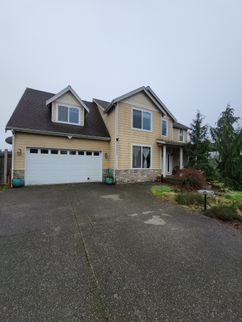
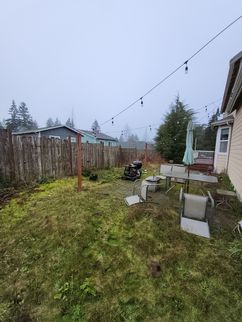
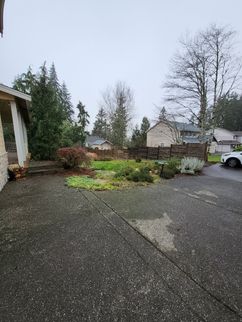

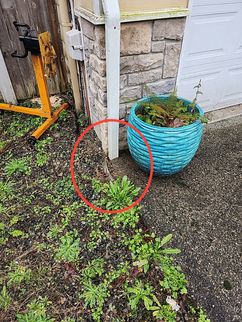
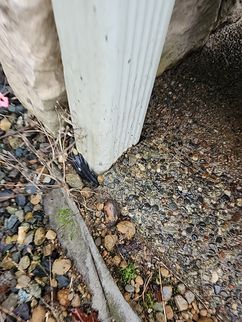

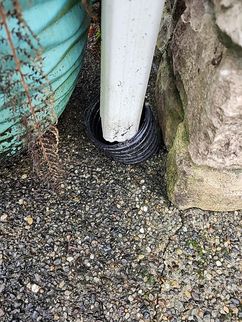
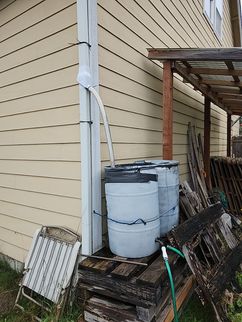
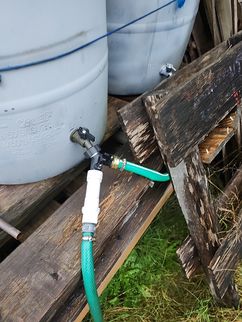
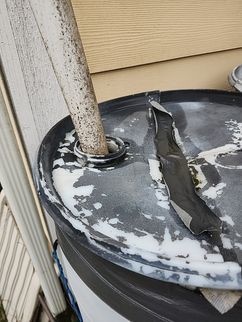
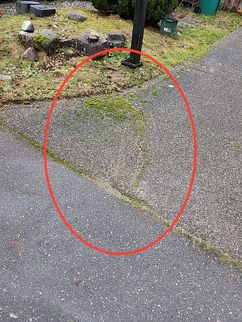
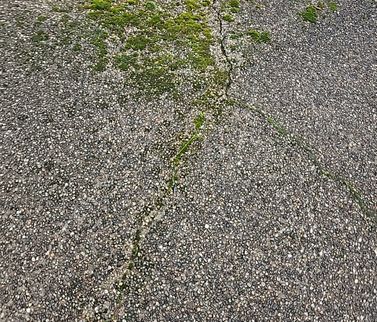
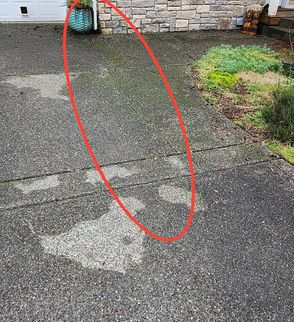
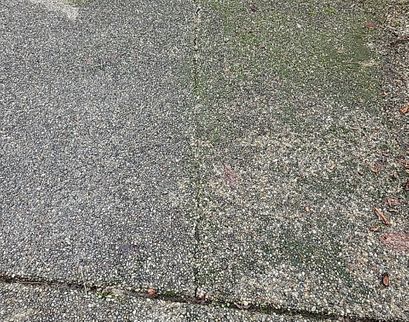
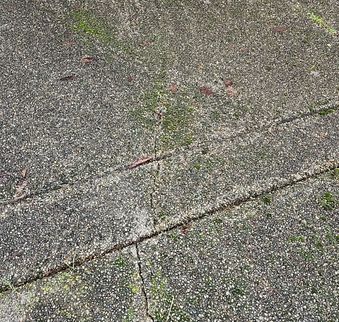
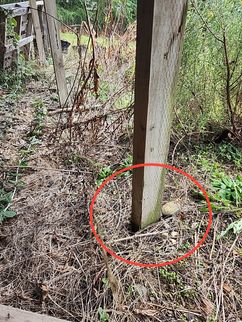
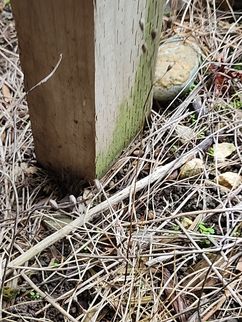
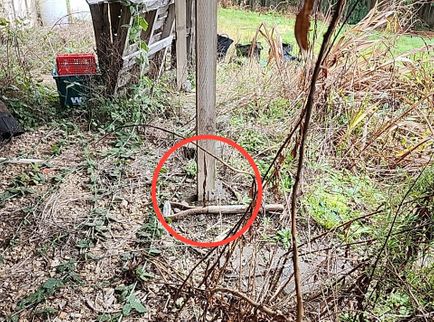
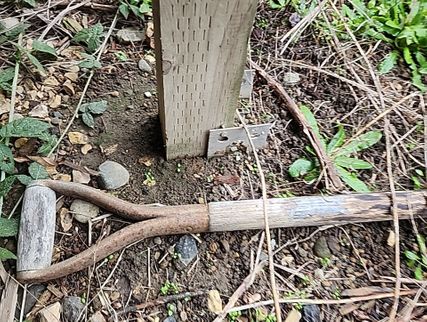
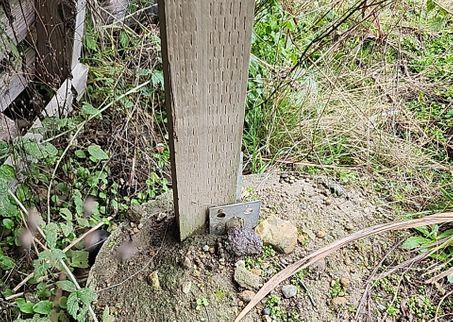
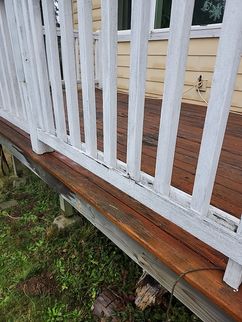
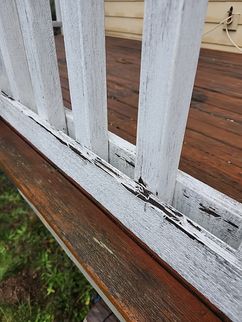

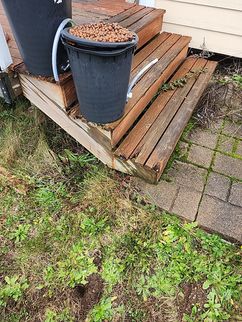
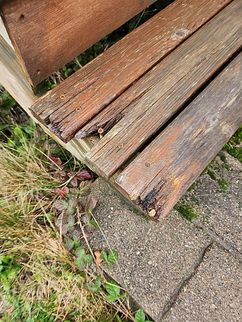
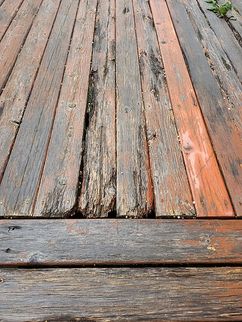
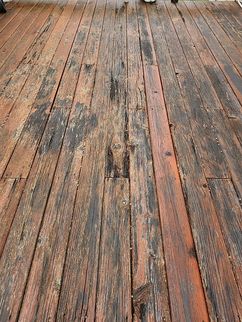
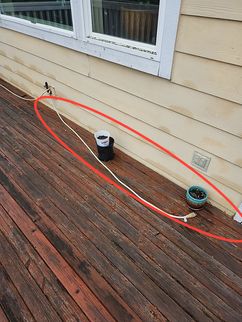

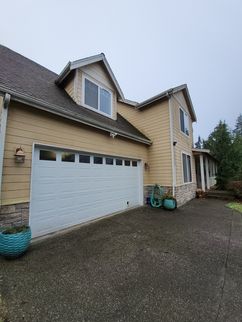
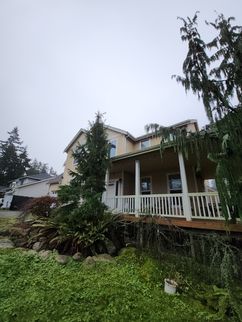

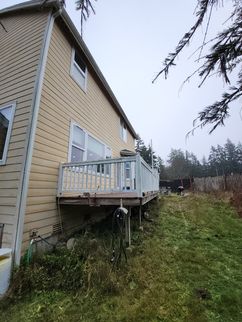
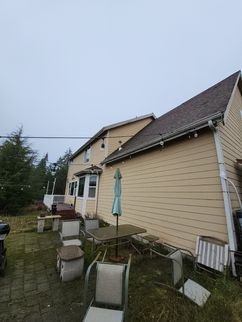
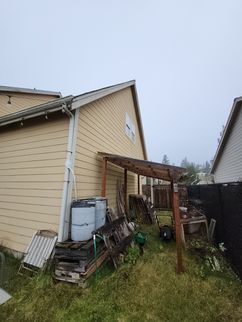
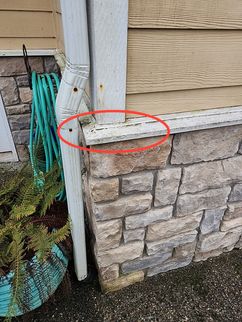
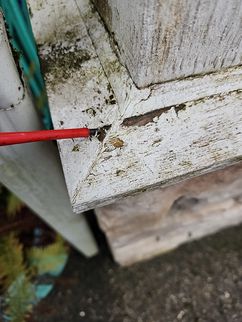
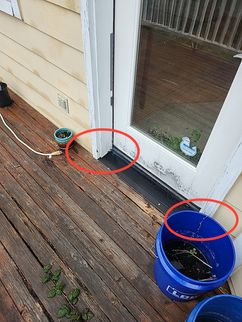
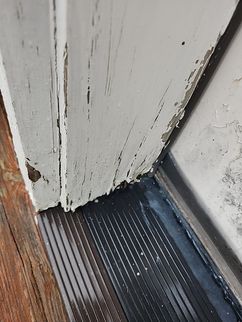
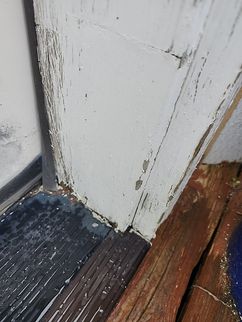
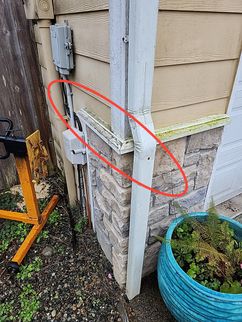
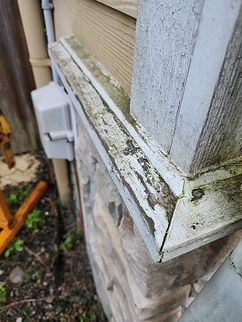
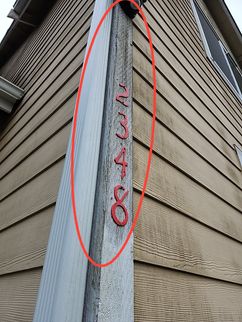
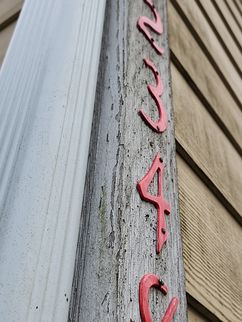
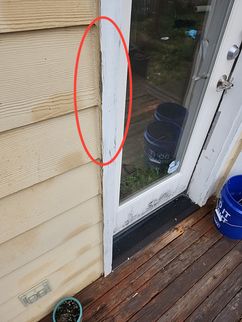
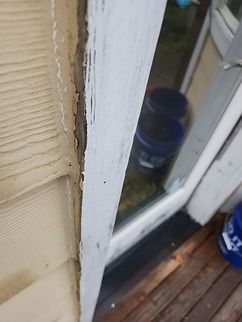

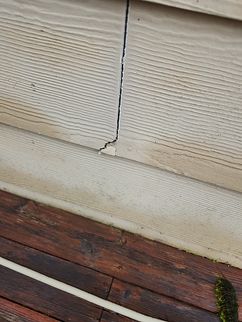
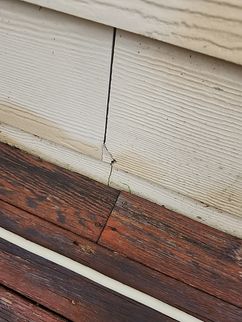
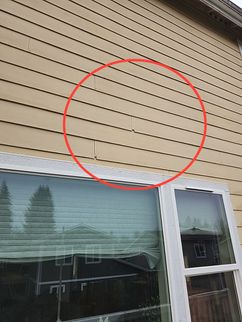
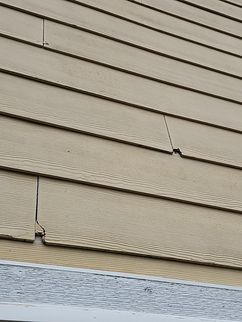
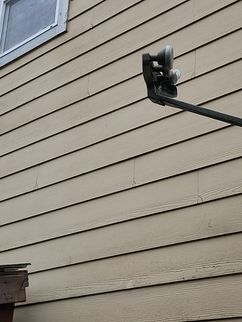
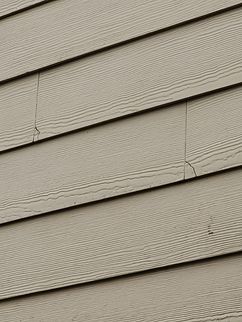
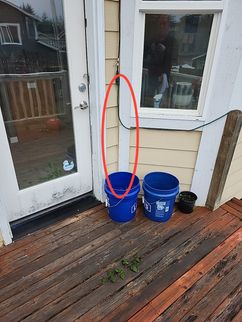
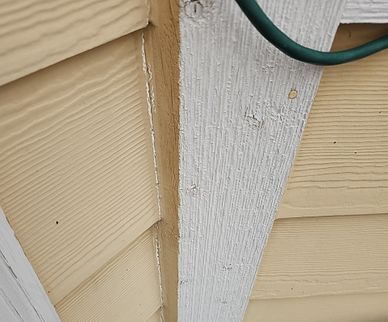
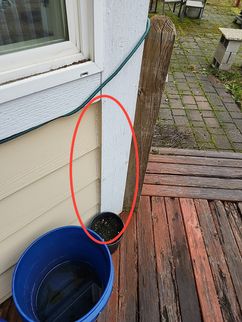
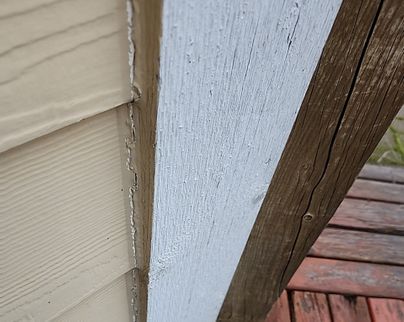

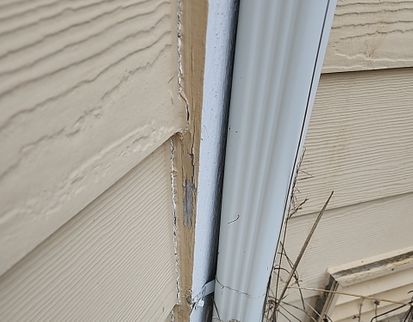
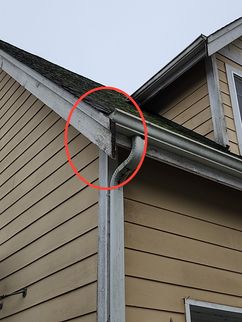

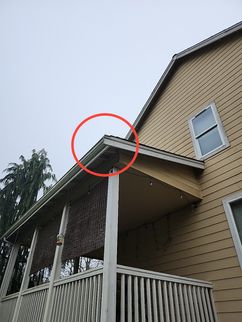
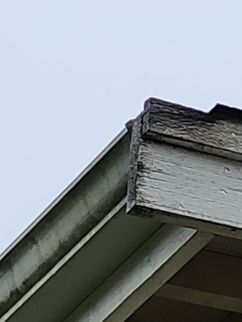
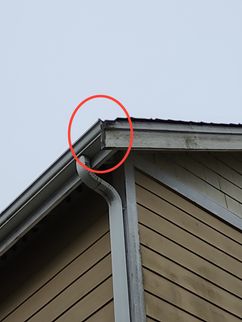
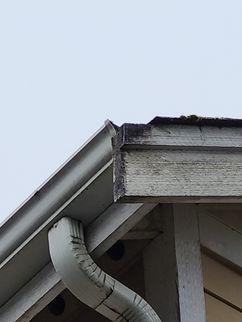
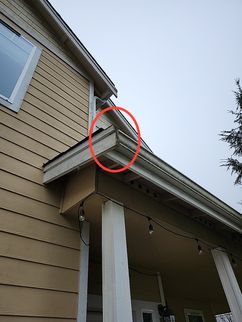
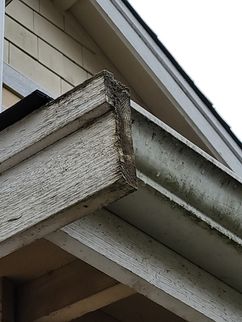
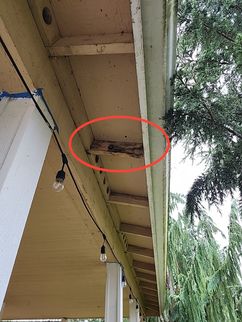
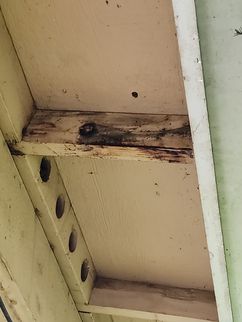
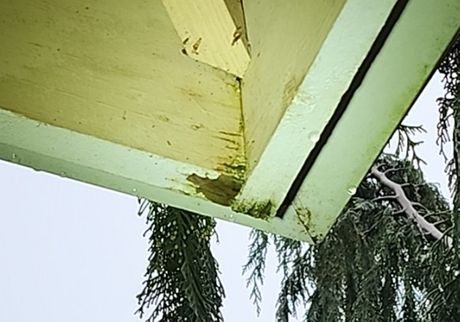
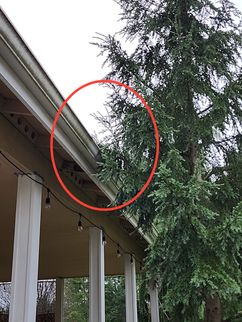
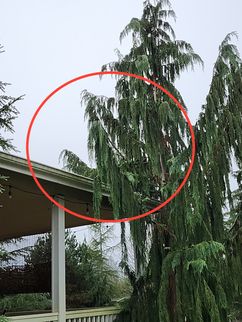

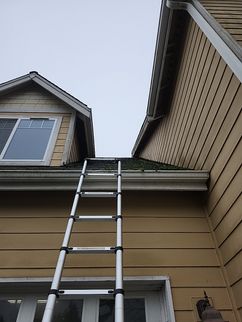
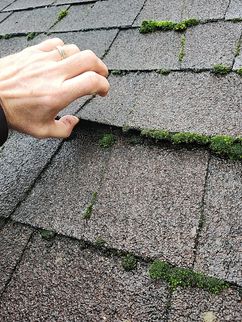
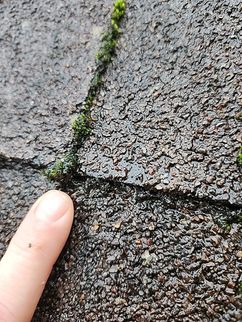
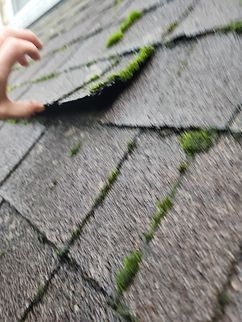
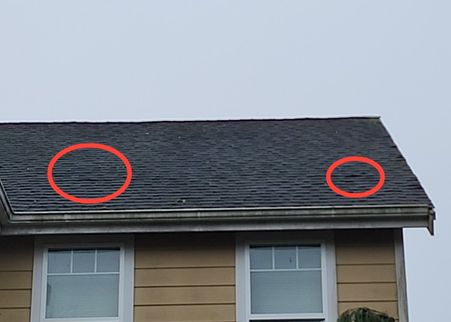
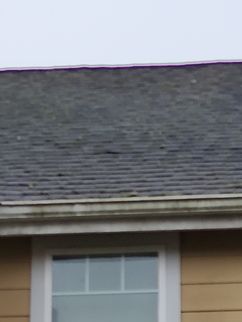
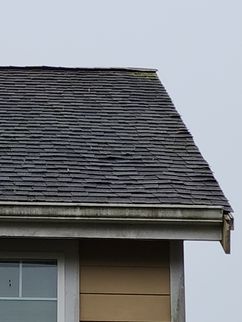
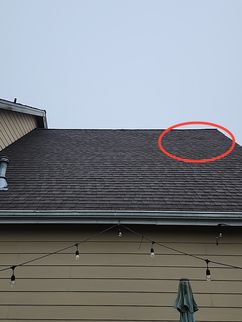
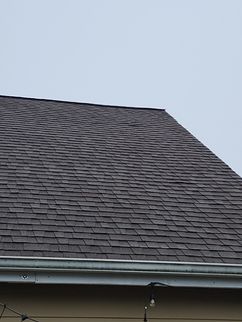
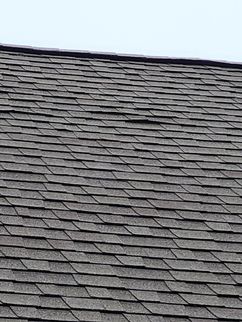

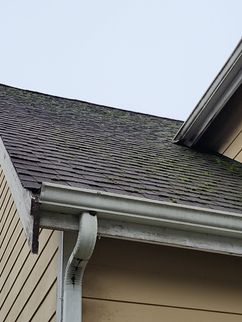
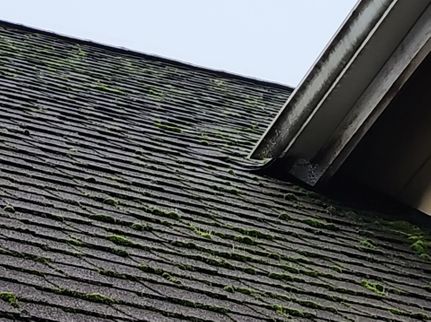
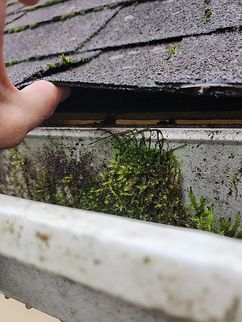
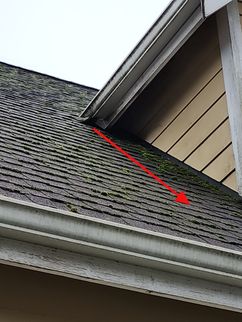
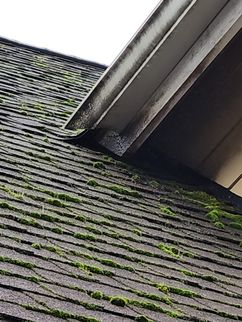
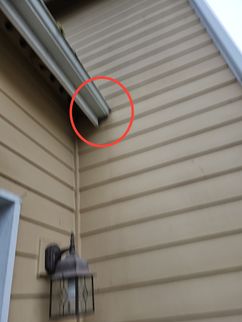
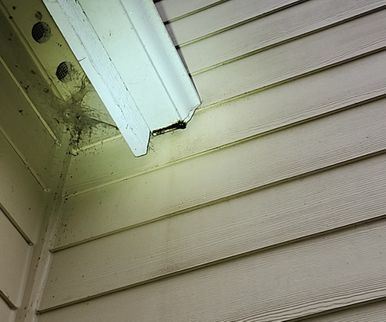
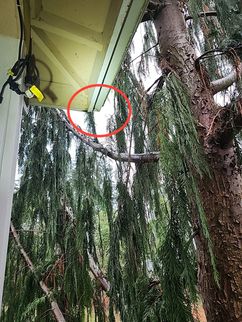
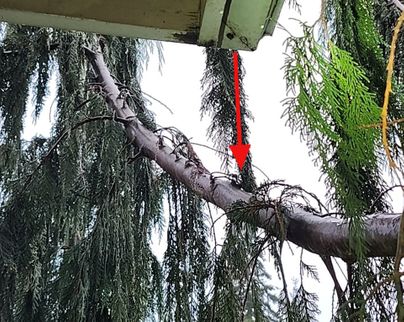
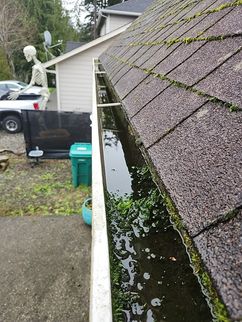
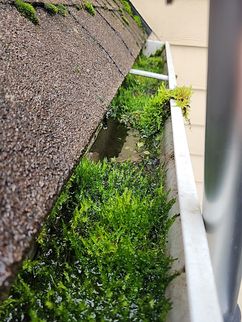
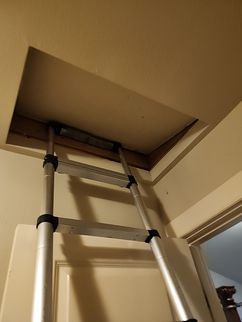
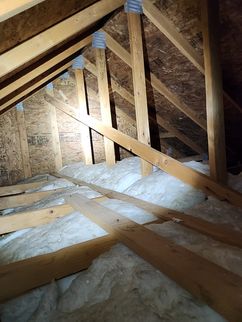
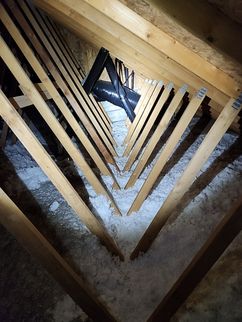
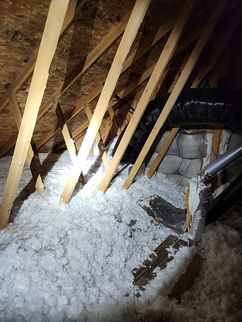
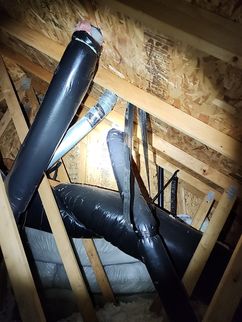
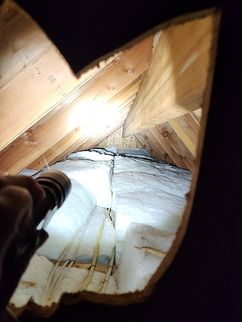
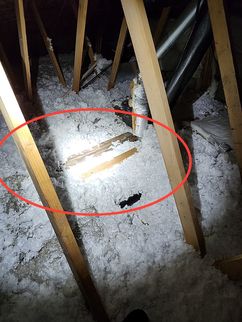
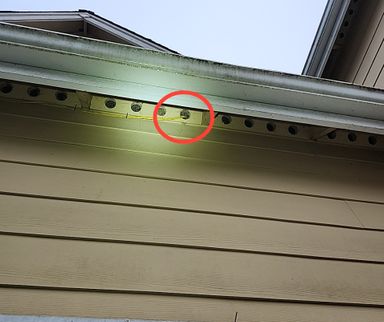

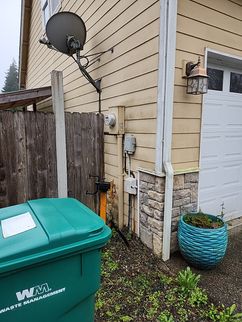
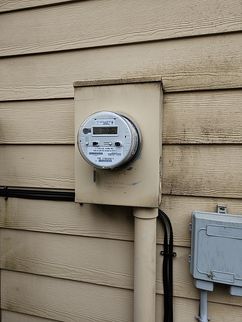
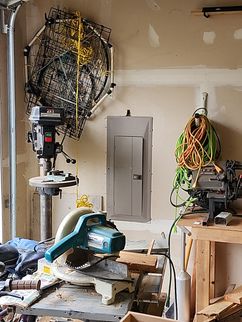
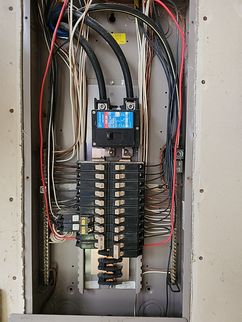
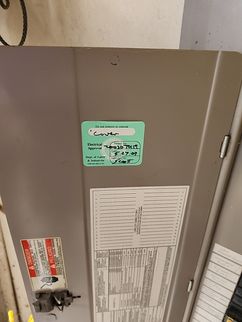

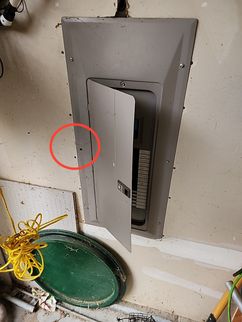
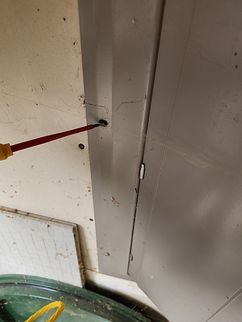
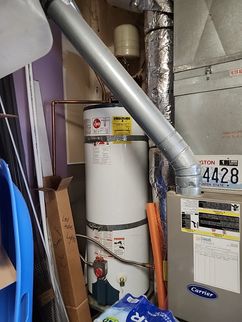
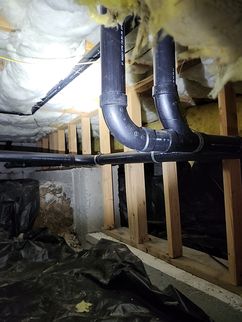
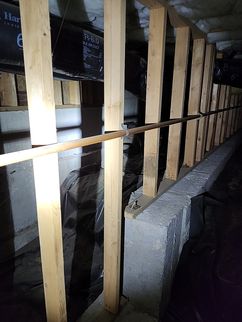
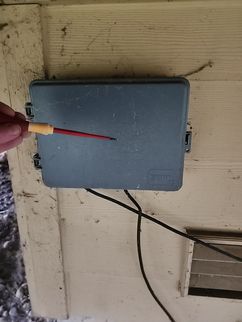

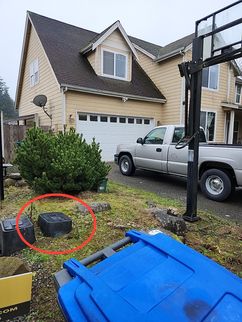
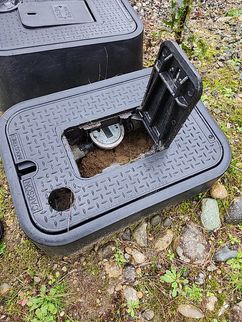
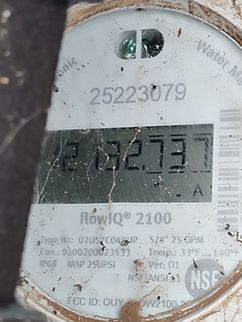
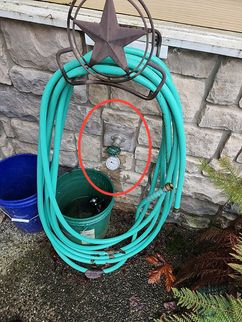
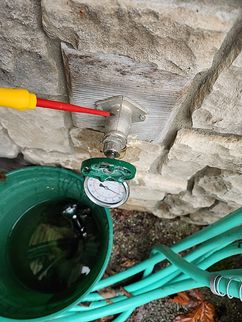
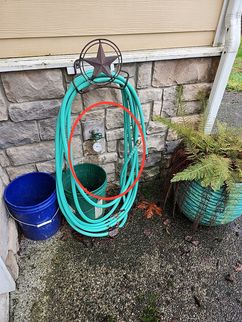

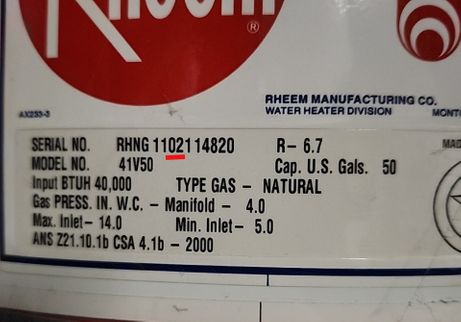
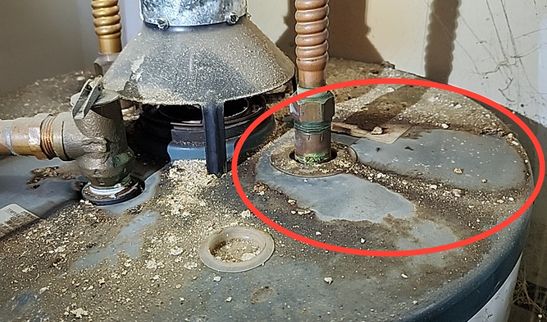
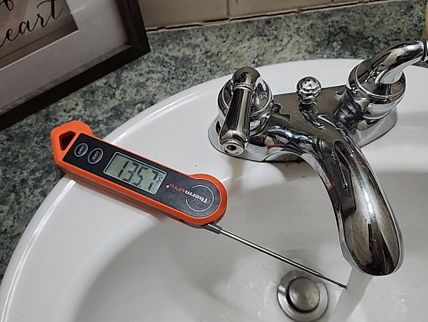

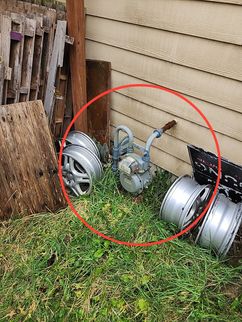
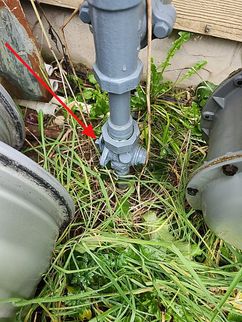
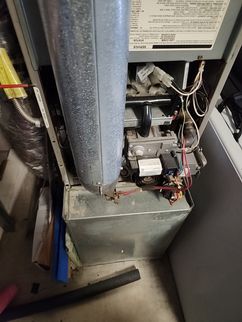
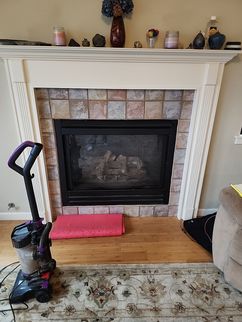
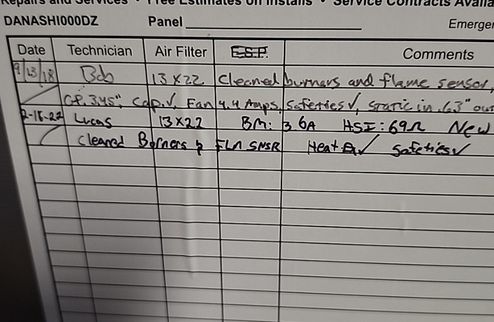
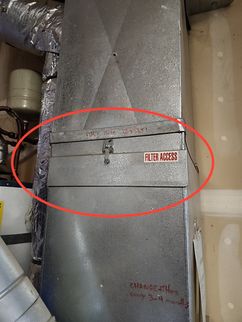
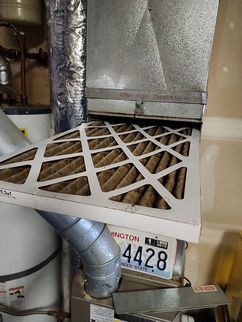
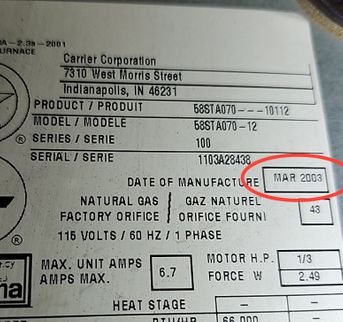

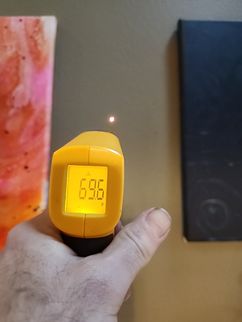
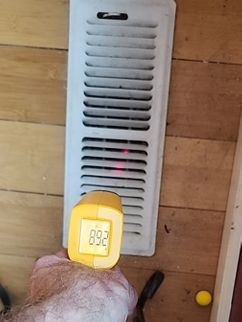
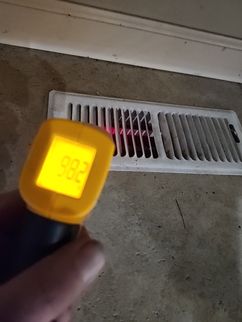
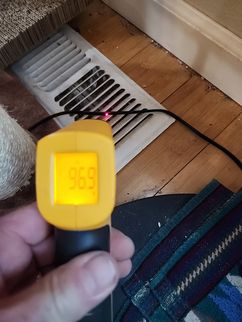
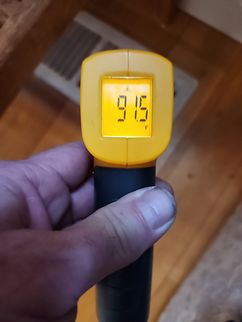
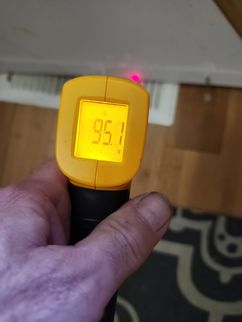
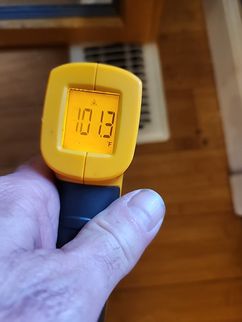
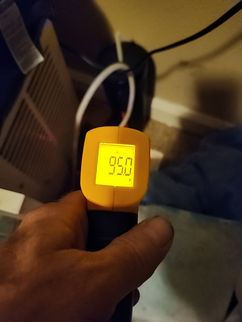
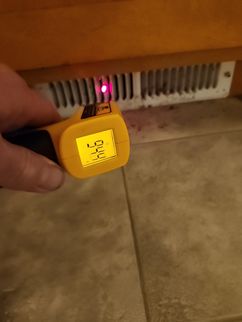
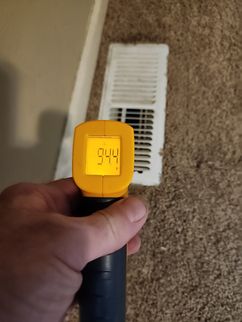
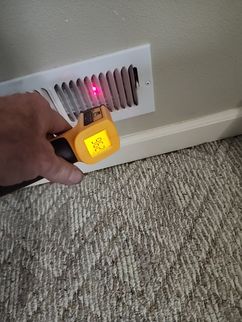

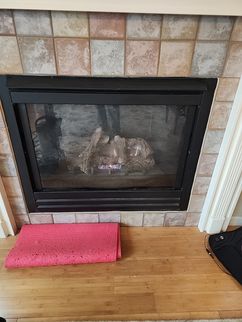
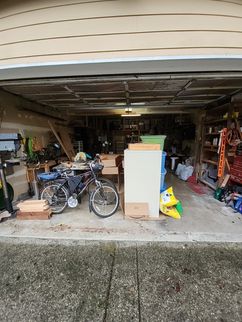
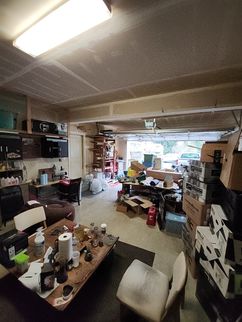
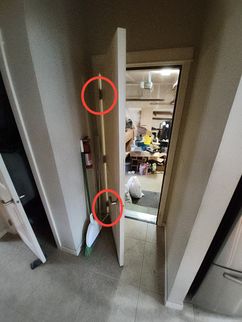
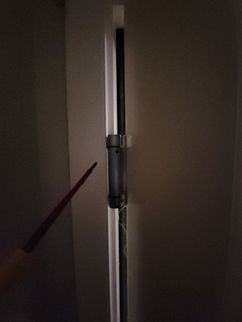
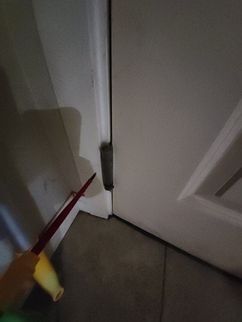
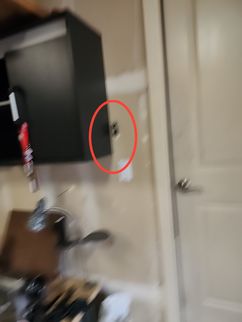
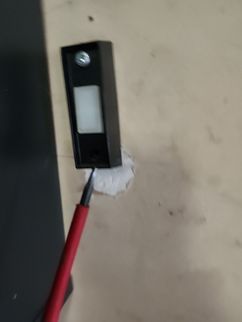
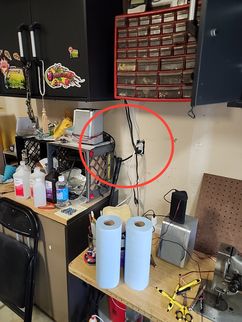
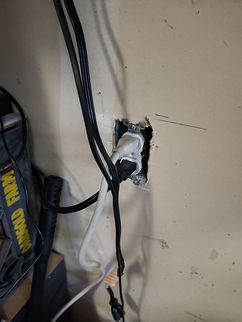
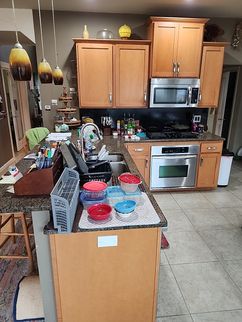
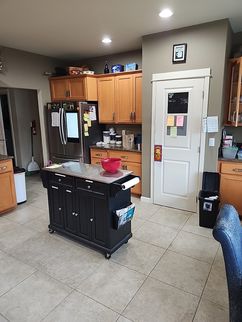
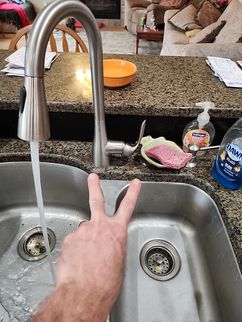
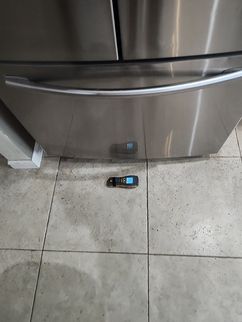
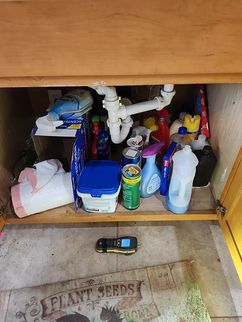
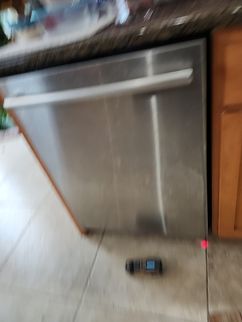
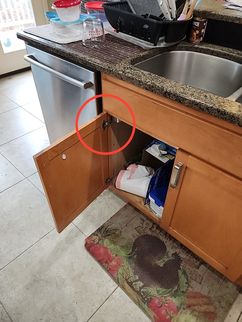
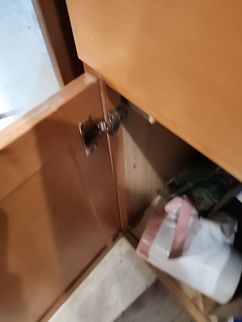
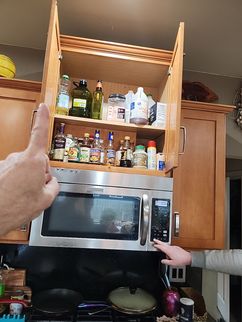
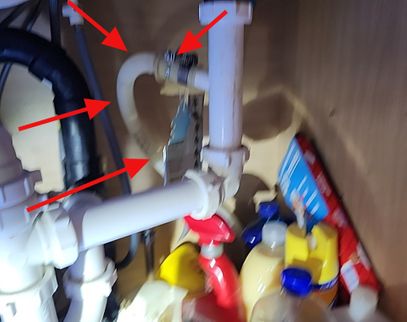
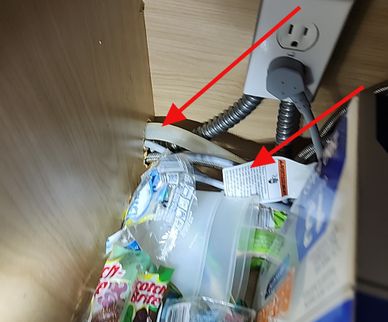
-43.jpg)
-37.jpg)
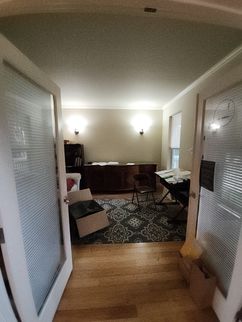
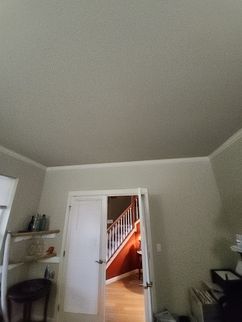
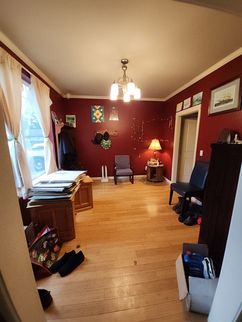
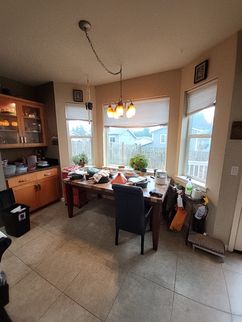
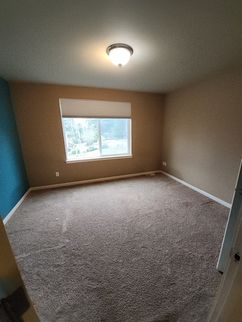

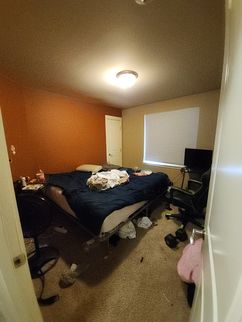
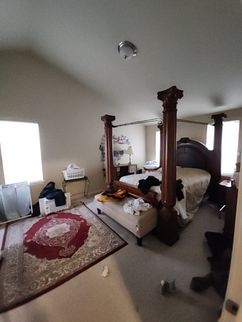
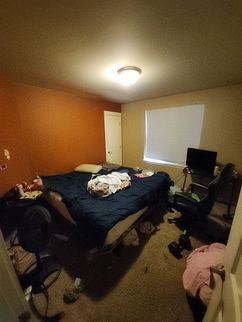
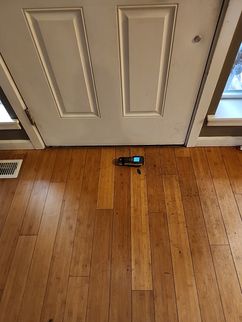
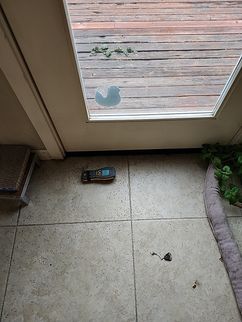
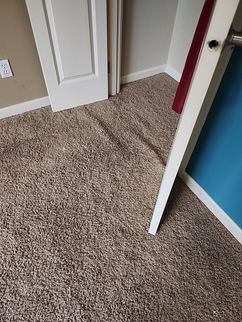
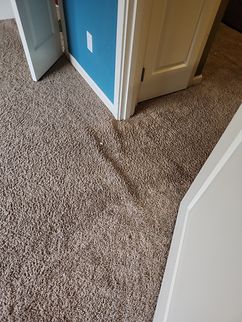
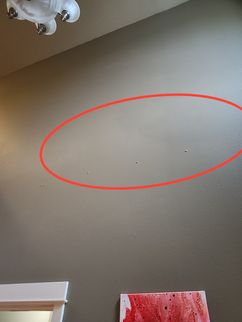
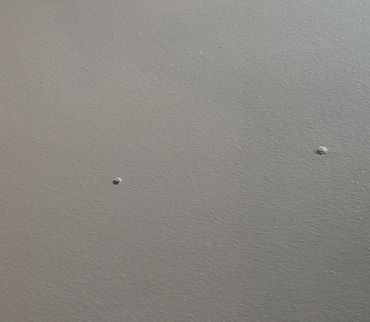
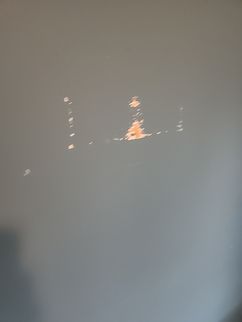
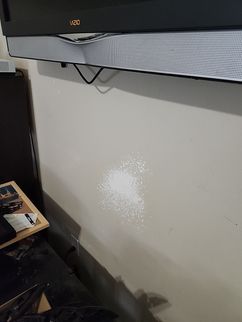
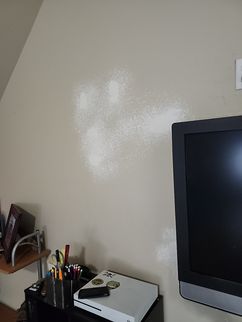
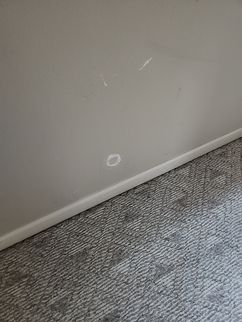
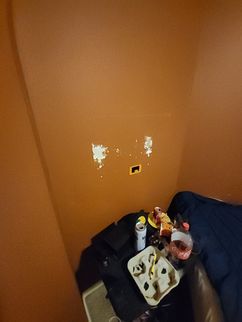
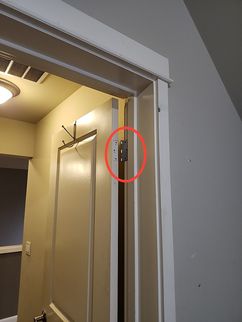
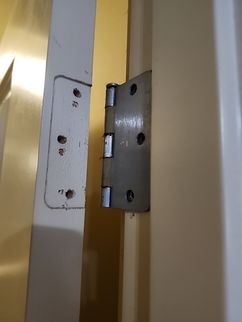
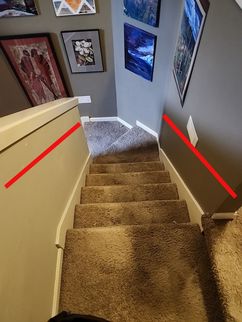
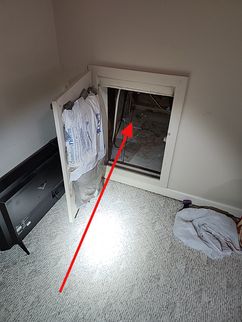
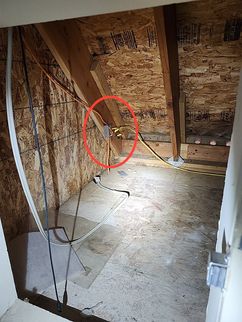
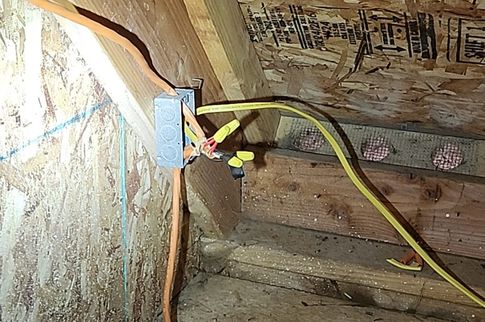
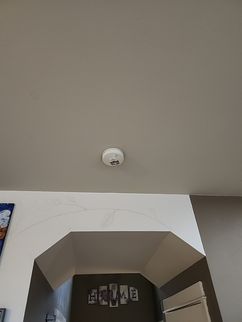
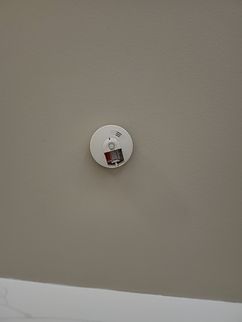
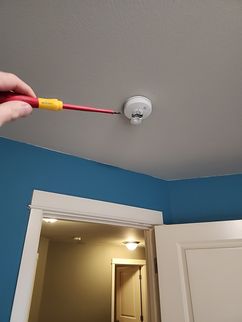

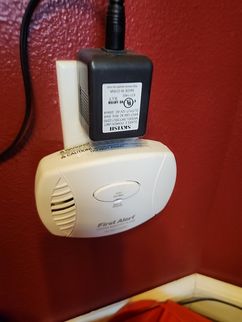
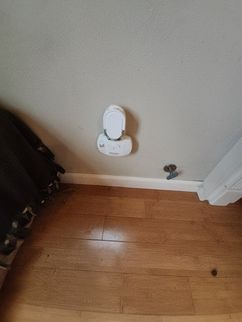
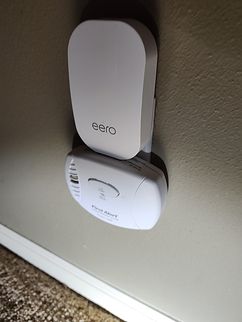
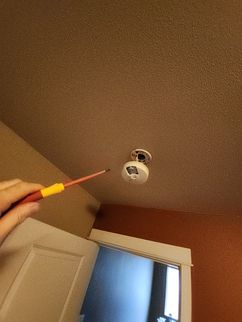
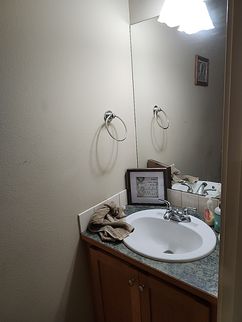
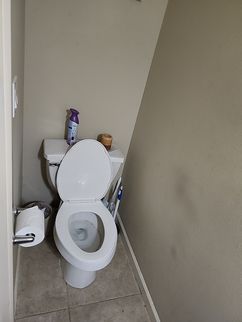
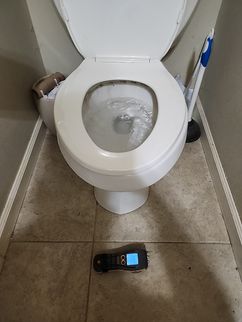
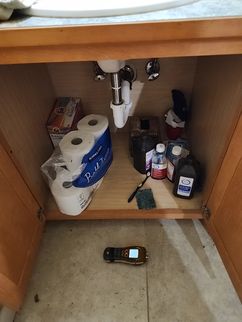
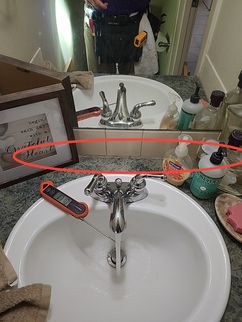
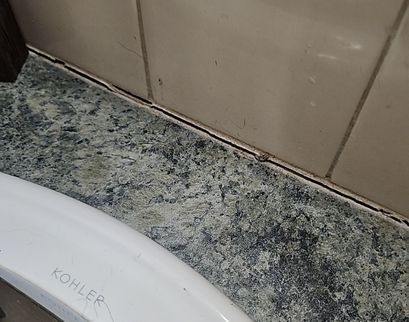
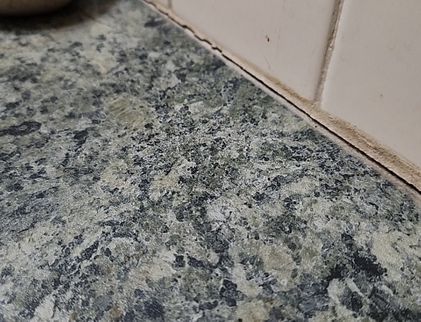
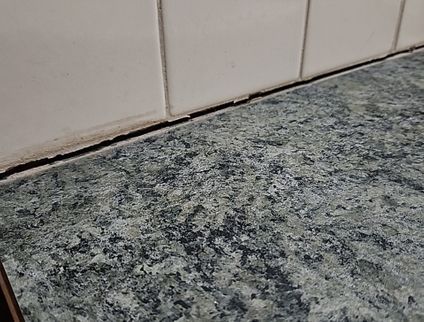
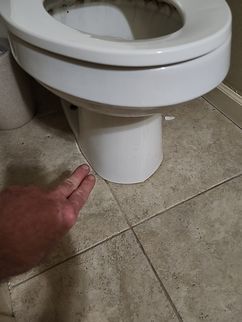
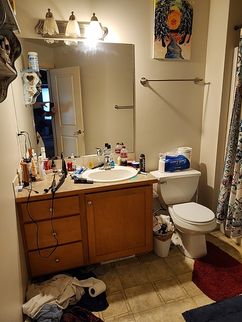
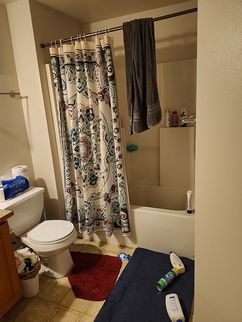
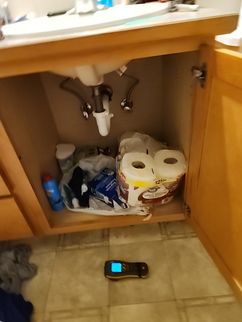
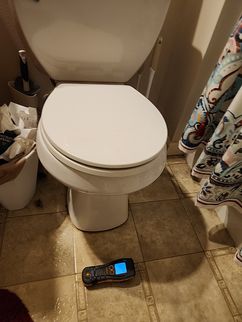
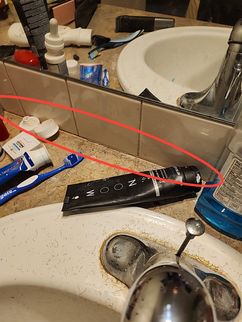
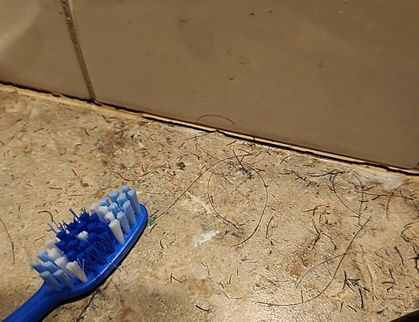
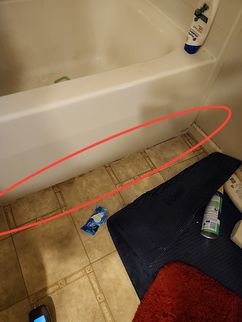
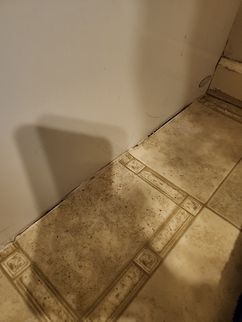
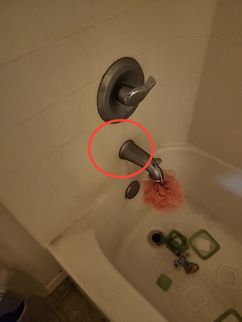
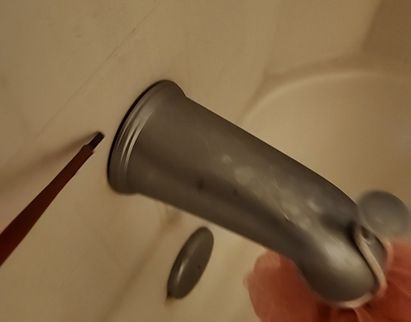
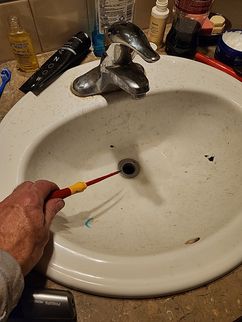
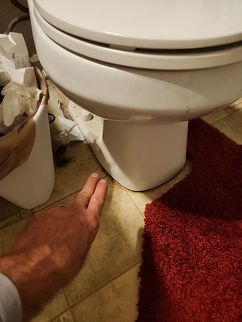
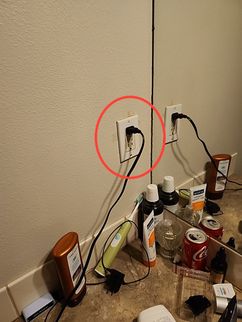
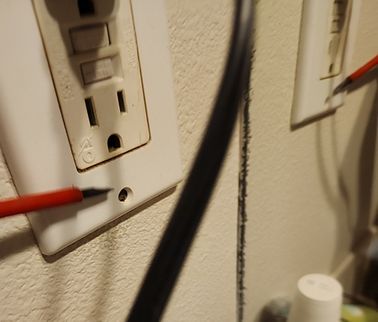
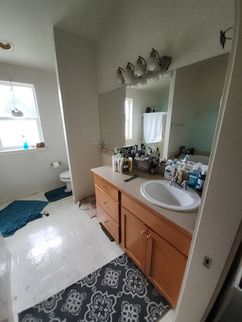
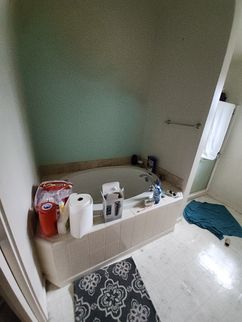
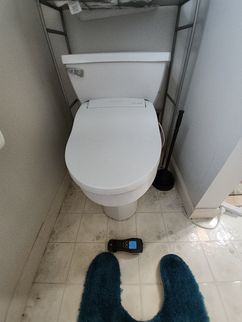
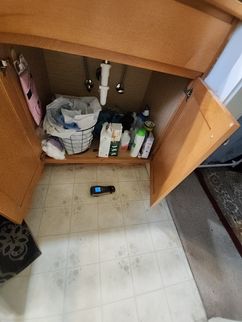
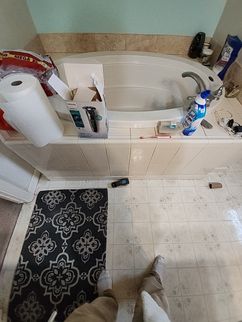
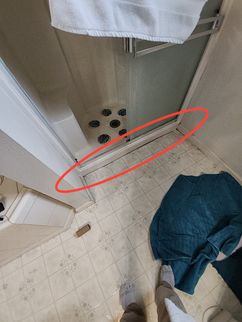
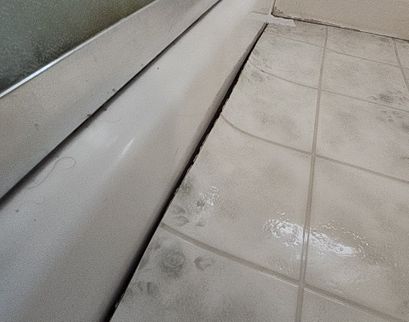
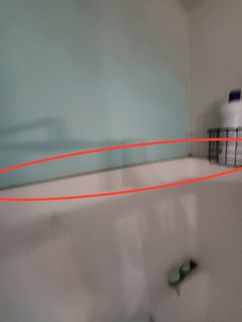
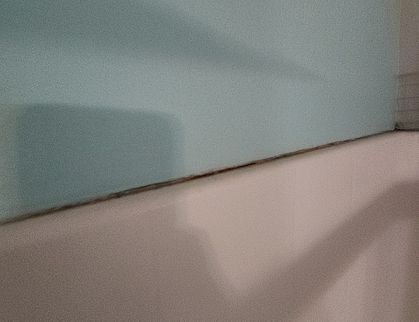
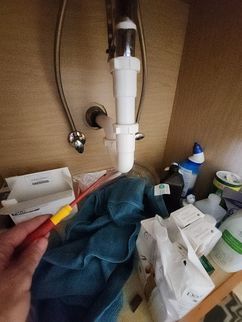
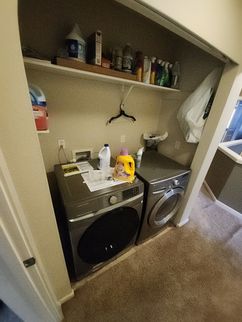
.png)
.png)
